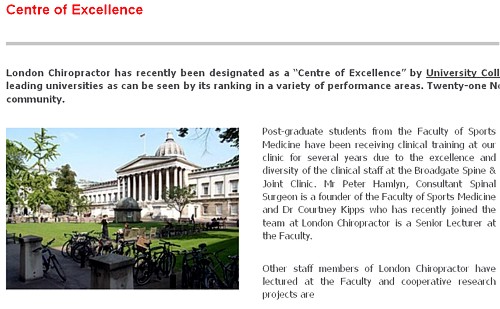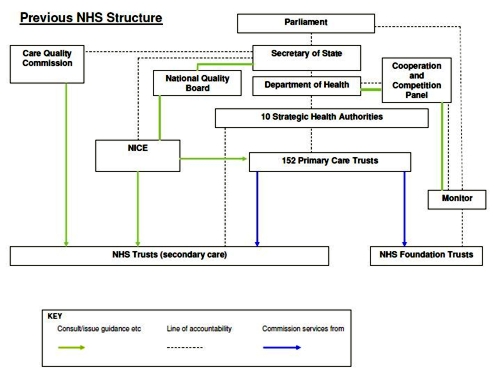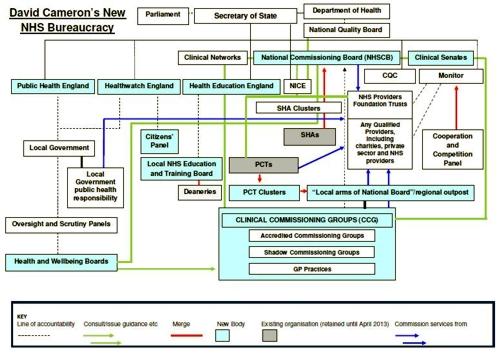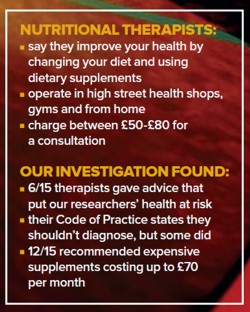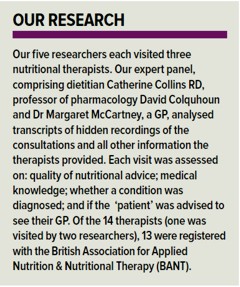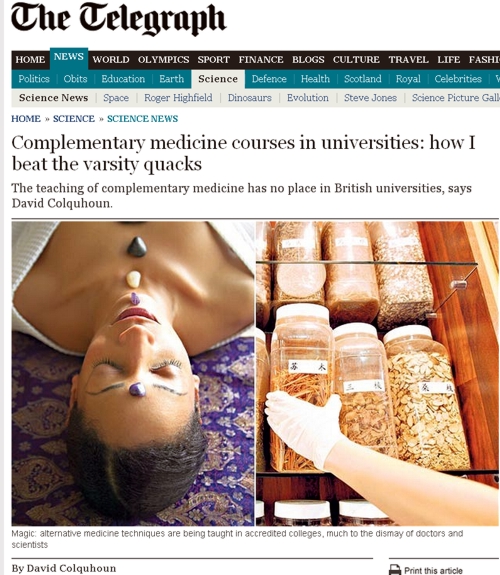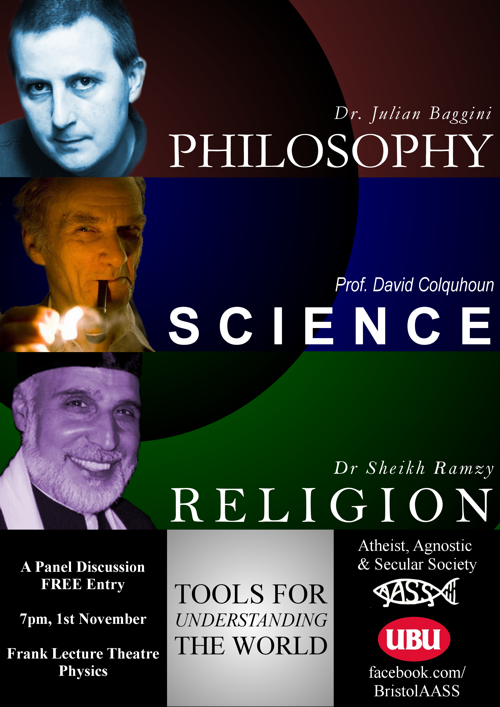David Colquhoun
The College of Medicine is well known to be the reincarnation of the late unlamented Prince of Wales Foundation for Integrated Health. I labelled it as a Fraud and Delusion, but that was perhaps over-generous. It seems to be morphing into a major operator in the destruction of the National Health Service through its close associations with the private health industry.
Their 2012 Conference was held on 3rd May. It has a mixture of speakers, some quite sound, some outright quacks. It’s a typical bait and switch event. You can judge its quality by the fact that the picture at the top of the page that advertises the conference shows Christine Glover, a homeopathic pharmacist who makes a living by selling sugar pills to sick people (and a Trustee of the College of Medicine).
Her own company’s web site says
The approaches are, of course, based on sugar pills. The claim is untrue and dangerous. My name for that is fraud. |
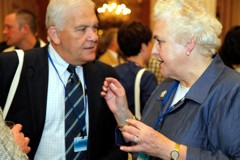 |
When the "College of Medicine" started it was a company, but on January 30th 2012, it was converted to being a charity. But the Trustees of the charity are the same people as the directors of the company. They are all advocates of ineffective quack medicine. The contact is named as Linda Leung, who was Operations Director of the Prince’s Foundation until it closed, and then became Company Secretary for the “College of Medicine”.
The trustees of the charity are the same people who were directors of the company
- Dr Michael Dixon, general practitioner. Michael Dixon was Medical Director of the Prince’s Foundation until it closed down.
- Professor George Lewith, is Professor of Health Research in the Complementary Medicine Research Unit, University of Southampton. He was a Foundation Fellow of the Prince’s Foundation until it closed down. Much has been written about him here.
- Professor David Peters. is Professor of Integrated Healthcare and Clinical Director at the University of Westminster’s School of Integrated Health; He’s famous for allowing dowsing with a pendulum as a method of diagnosis for treatment with unproven herbal medicines,
He was a Foundation Fellow of the Prince’s Foundation until it closed down. - Mrs Christine Glover is a pharmacist who sells homeopathic pills. She was a Foundation Fellow of the Prince’s Foundation until it closed down.
The involvement of Capita
According to their web site
"A Founder of the College of Medicine is Capita."
Still more amazingly, the CEO of the College of Medicine is actually an employee of Capita too.
"Mark Ratnarajah is interim CEO of the College of Medicine as well as Business Director at Capita Health and Wellbeing."

|
That isn’t the end of it. The vice-president of the College of Medicine is Dr Harry Brunjes. There is an article about him in the May 2012 issue of Director Magazine. It has to be said that he doesn’t sound like a man with much interest in the National Health Service.. |
Within 9 years of graduating he set up in private practice in Harley Street. Five years later he set up Premier Medical, which, after swallowing a couple of rivals, he sold to Capita for £60 million. He is now recorded in a Companies House document as Dr Henry Otto Brunjes, a director of Capita Health Holdings Limited. This company owns all the shares in Capita Health and Wellbeing Limited, and it is, in turn, owned by Capita Business Services Limited. And they are owned by Capita Holdings Limited. I do hope that this baroquely complicated array of companies with no employees has nothing to do with tax avoidance.
Capita is, of course, a company with a huge interest in the privatisation of health care. It also has a pretty appalling record for ripping off the taxpayer.
It has long been known in Private Eye, as “Crapita” and “the world’s worst outsourcing firm”.
Capita were responsible for of the multimillion pound failed/delayed IT project for the NHS and HMRC. They messed up on staff administration services at Leicester Hospitals NHS Trust and the BBC where staff details were lost. They failed to provide sufficient computing systems for the Criminal Records Bureau, which caused lengthy delays. Capita were also involved in the failure of the Individual Learning Accounts following a £60M over-spend. And most recently, they have caused the near collapse of court translation services after their acquisition of Applied Language Services.
With allies like that, perhaps the College of Medicine hardly needs enemies. No doubt Capita will be happy to provide the public with quackery for an enormous fee from the taxpayer.
 |
One shouldn’t be surprised that the College is involved in Andrew Lansley’s attempts to privatise healthcare. Michael Dixon, Chair of the College of Medicine, also runs the "NHS Alliance", almost the only organisation that supported the NHS Bill. The quackery at his own practice defies belief (some it is described here). |
One would have thought that such a close association with a company with huge vested interests would not be compatible with charitable status. I’ve asked the Charity Commission about that. The Charity commission, sadly, makes no judgements about the worthiness of the objects of the charities it endorses. All sorts of dangerous quack organisations are registered charities, like, for example, Yes to Life.
Secrecy at the College of Medicine
One of the big problems about the privatisation of medicine and education is that you can’t use the Freedom of Information Act to discover what they are up to. A few private companies try to abide by that act, despite not being obliged to do so. But the College of Medicine is not one of them.
Capita They refuse to disclose anything about their relationship with Capita. I asked I asked Graeme Catto, who is a friend (despite the fact that I think he’s wrong). I got nothing.
"Critical appraisal" I also asked Catto for the teaching materials used on a course that they ran about "critical appraisal". Any university is obliged, by the decision of the Information Tribunal, to produce such material on request. The College of Medicine refused, point blank. What, one wonders, have they got to hide? Their refusal strikes me as deeply unethical.
The course (costing £100) on Critical Appraisal, ran on February 2nd 2012. The aims are "To develop introductory skills in the critical appraisal of randomised controlled trials (RCTs) and systematic reviews (SRs)". That sounds good. Have they had a change of heart about testing treatments?
But, as always, you have to look at who is running the course. Is it perhaps a statistician with expertise in clinical trials? Or is it a clinician with experience in running trials? There are plenty of people with this sort of expertise. But no, It is being run by a pharmacist, Karen Pilkington, from that hotbed of unscientific medicine, the University of Westminster.
Pilkington originally joined the University of Westminster as manager for a 4-year project to review the evidence on complementary therapies (funded by the Department of Health). All of her current activities centre round alternative medicine and most of her publications are in journals that are dedicated to alternative medicine. She teaches "Critical Appraisal" at Westminster too, so I should soon have the teaching materials, despite the College’s attempts to conceal them.
Three people who ought to know better
Ore has to admire, however grudgingly, the way that the quacks who run the College of Medicine have managed to enlist the support of several people who really should know better. I suppose they have been duped by that most irritating characteristic of quacks, the tendency to pretend they have the monopoly on empathetic treatment of patients. We all agree that empathy is good, but every good doctor has it. One problem seems to be that senior medical people are not very good at using Google. They don’t do their homework.
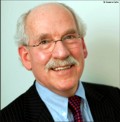
|
Professor Sir Graeme Catto MD DSc FRCP FMedSci FRSE is president of the College of Medicine. He’s Emeritus Professor of Medicine at the University of Aberdeen. He was President of the General Medical Council from 2002 to 2009, Pro Vice-Chancellor, University of London and Dean of Guy’s, King’s and St Thomas’ medical school between 2000 and 2005. He’s nice and well-meaning chap, but he doesn’t seem to know much about what’s going on in the College. |

|
Professor Sir Ian Kennedy LLD, FBA, FKC, FUCL, Hon.DSc(Glasgow), Hon.FRCP is vice-president of the College. Among many other things he is Emeritus Professor of Health Law, Ethics and Policy at University College London. He was Chair of the Healthcare Commission until 2003, when it merged with other regulators to form the Care Quality Commission. No doubt he can’t be blamed for the recent parlous performence of the CQC. |

|
Professor Aidan Halligan MA, MD, FRCOG, FFPHM, MRCPI Since March 200y he has been Director of Education at University College London Hospitals. From 2003 until 2005, he was Deputy Chief Medical Officer for England, with responsibility for issues of clinical governance, patient safety and quality of care. He’s undoubtedly a well-meaning man, but so focussed on his (excellent) homelessness project that he seems immune to the company he keeps. Perhaps the clue lies in the fact that when I asked him what he thought of Lansely’s health bill, he seemed to quite like it. |
It seems to me to be incomprehensible that these three people should be willing to sign a letter in the British Medical Journal in defence of the College, with co-signatories George Lewith (about whom much has been written here) and the homeopath Christine Glover. In so doing, they betray medicine, they betray reason, and most important of all, they betray patients. Perhaps they have spent too much time sitting on very important committees and not enough time with patients.
The stated aims of the College sound good.
"A force that combines scientific knowledge, clinical expertise and the patient’s own perspective. A force that will re-define what good medicine means − renewing the traditional values of service, commitment and compassion and creating a more holistic, patient-centred, preventative approach to healthcare."
But what they propose to do about it is, with a few exceptions, bad. They try to whip up panic by exaggerating the crisis in the NHS. There are problems of course, but they result largely from under-funding (we still spend less on healthcare than most developed countries), and from the progressive involvement of for-profit commercial companies, like Capita. The College has the wrong diagnosis and the wrong solution. How do they propose to take care of an aging population? Self-care and herbal medicines seem to be their solution.
|
The programme for the College’s workshop shows it was run by herbalist Simon Mills and by Dick Middleton an employee of the giant herbal company, Schwabe. You can see Middleton attempting to defend misleading labelling of herbal products on YouTube, opposed by me. |
|
It seems that the College of Medicine are aiding and abetting the destruction of the National Health Service. That makes me angry.(here’s why)
I can end only with the most poignant tweet in the run up to the passing of the Health and Social Care Act. It was from someone known as @HeardInLondon, on March 15th
"For a brief period during 20th century, people gave a fuck & looked after each other. Unfortunately this proved unprofitable." #SaveOurNHS
— HeardinLondon (@HeardinLondon) March 13, 2012
"For a brief period during 20th century, people gave a fuck and looked after each other. Unfortunately this proved unprofitable."
Unprofitable for Crapita, that is.
Follow-up
5 May 2012. Well well, if there were any doubt about the endarkenment values of the College, I see that the Prince of Wales, the Quacktitioner Royal himself, gave a speech at the College’s conference.
"”I have been saying for what seems a very long time that until we develop truly integrated systems – not simply treating the symptoms of disease, but actively creating health, putting the patient at the heart of the process by incorporating our core human elements of mind, body and spirit – we shall always struggle, in my view, with an over-emphasis on mechanistic, technological approaches.”
Of course we all want empathy. The speech, as usual, contributes precisely nothing.
12 June 2012. Oh my, how did I manage to miss the fact the the College’s president, Professor Sir Graeme Catto, is also a Crapita eployee. It’s over a year since he was apponted to Capita’s clinical governance board he says "  In a rapidly growing health and wellbeing marketplace, delivering best practice in clinical governance is of utmost importance. I look forward to working with the team at Capita to assist them with continuing to adopt a best in class approach.". The operative word is "marketplace".
In a rapidly growing health and wellbeing marketplace, delivering best practice in clinical governance is of utmost importance. I look forward to working with the team at Capita to assist them with continuing to adopt a best in class approach.". The operative word is "marketplace".
|
It is with a sinking heart that I write this post. Last summer, my son graduated from Aberdeen (in politics and international relations). He enjoyed his time there. It’s a wonderful place with some very distinguished alumni. It’s had a good reputation in science and medicine. So why has the University of Aberdeen been dabbling in the mystical barmpottery of the Steiner cult? |
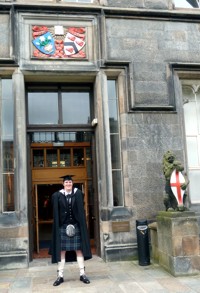
|
According to a rumour on twitter yesterday, the university has avoided making an idiot of itself. Nonetheless there are lessons to be learned from this episode and it needs to be recorded for posterity.
The University of Aberdeen owes a huge debt to James Gray who, more than anyone else, revealed the facts about their anthroposophical involvement. They should give him an honorary degree.
Aberdeen has two connections with the Steiner movement. One is the BA (Hons) in Social Pedagogy. The other is a potentially more dangerous proposal to establish a chair in anthroposophical "medicine" in return for large donations, partly from Germany.
The BA (Hons) Social Pedagogy appears on the university’s web site, though I’m told that it isn’t running this year. I’ve applied under the Freedom of Information (Scotland) Act 2002 to see exactly what’s taught. But James Gray has already revealed the gist of it on his blog, Heavenly beings and astral forces: the real meaning of ‘social pedagogy’. Does the vice-chancellor believe in astral forces and reincarnation? I doubt it, so why does he allow this sort of nonsense to be taught to hapless students?
The Dunlop chair of Integrative Health Care and Management
The word "integrative" is (US version of) the euphemism that is currently fashionable among quacks in an attempt to make alternative medicine sound respectable. Is the University not aware of that? See Prince of Wales Foundation for magic medicine: spin on the meaning of ‘integrated’.
The print media caught up with bloggers at last, with a rather good article by Paul Jump in Times Higher Education this week, Aberdeen looks to feather its nest in a field dubbed ‘pure quackery’. This article doesn’t feature in the University’s media list, though a visit from the Prince of Wales’ wife does (she will, no doubt, approve).
Documents obtained by James Gray show that reveal that Dr Stefan Geider, co-ordinator of the Anthroposophic Health, Education and Social Care Movement (AHaSC) and anthroposophical doctor at Camphill Aberdeen, proposed that the University host a centre for anthroposophic medicine in 2010.
Some of the documents have (temporarily I hope) vanished from James Gray’s site. Luckily I have copies of them
- Starter paper and draft invitation to tender. This shows the proposals have been around at last since April 2010.
- Draft job description for Dunlop Chair
- Governance and Nominations Committee paper
- Professor Mike Greaves’s response
James Gray obtained the job description for the proposed chair. It says
"The University of Aberdeen, College of Life Sciences and Medicine, School of Medicine and Dentistry seeks to appoint a Professor of Integrative Health Care and Management (Dunlop Chair)."
The job is described with the usual weasel words about world class research. But read on and you find
"To develop collaboration within the [insert appropriate division please] and with the School of Education
particularly regarding BA in Social Pedagogy "
And, under ‘essential knowledge skills and experience’,
- In depth knowledge of and practice experience in the system of anthroposophic medicine as an integrative
approach - Strong track record of applied and methodological research published in leading peer-reviewed journals
What’s amazing about this, apart from the obvious incompatibility of these two requirements, is that the job description was approved by none other than Professor Mike Greaves, head of the College of Life Sciences and Medicine. On 12 December 2011, Professor Greave comments "This looks OK to me".
It is astonishing that high-ranking medical people in the university seem to be totally unaware of the nature of the Steiner movement, and the mumbo jumbo of anthroposophical medicine. Does Professor Greaves really believe in reincarnation? Does he think that mistletoe is an appropriate treatment for cancer?
After reading James Gray’s blog, Will Aberdeen University give green light to anthroposophic medicine centre?, I wrote to the vice chancellor, Professor Ian Diamond, and others, as follows.
|
Dear Professor Diamond I was pleased to hear that Aberdeen was reconsidering the “social pedagogy” course. I was also pleased to see that someone appreciates the extreme reputation risk that this poses to Aberdeen’s reputation in medical sciences. I have no doubt that Hans Kosterliz, whom I knew well, would be turning in his grave if he were aware of the proposal that to appoint a Dunlop chair. You would go from Lasker prize to booby prize in a couple of decades. This summer. my son graduated from Aberdeen (in a quite different area), and I don’t want the value of his degree to be tainted by the ridicule that will be poured on his alma mater for teaching about “astral forces”. I was astounded by Professor Greaves assertion that “The College of Life Sciences and Medicine wish to establish a Chair in Integrative Health Care and Management”. Has Prof Greaves not seen the nature of the material advocated by these people? I simply can’t believe that this sort of stuff is supported by your scientists. May I suggest that the university should conduct a secret ballot among it’s many good medical scientists. They are the people whose reputation will be besmirched if this development were to go ahead. I realise that it can’t be expected that those who run the university can be aware of what’s taught on all the courses, so I suggest that the ballot should contain references to James Gray’s blog (you should be very grateful to him for doing a job which should really have been done by the validation committee). You might also wish to refer the committee and governors to the three scholarly guest posts on my own blog that analyse the bizarre cult-like nature of the Steiner movement and the sheer dangerous quackery of “anthroposophical medicine”. The true nature of Steiner (Waldorf) education. Mystical barmpottery at taxpayers’ expense. Part 1 The Steiner Waldorf cult uses bait and switch to get state funding. Part 2. Steiner Waldorf Schools Part 3. The problem of racism None of this is apparent in the official documents revealed here, but it should be. It is astonishing that the documents should refer to “hospital centres such as The Royal London Hospital for Integrated Medicine (RLHIM)” as though that were a recommendation. Are you not aware that most of the RLHIM building is occupied by real medicine: the homeopaths etc have been reduced to small rump? Are are you not aware of how often the RLHIM has been condemned by the Advertising Standards Authority because of the false claims it makes? It is equally astonishing that the documents should say “Aberdeen would be the first university outside central Europe and the first in the UK to establish a chair in this area” as though that were a recommendation, rather a giant step back to 19th century medicine and mysticism. There are very good reasons why other universities do not have a chair like that which you are proposing. I hope that, when considering this proposal, you will consider very seriously the damage to your reputation that would be incurred by taking money from organisations with such an obvious axe to grind. It will be all over the blogs, and then the newspapers if you were to go ahead. It is not unknown, even in the USA, for universities to turn down donations. Florida State University turned down $10m that someone wished to donate to found a chiropractic college, though admittedly only after one of their own eminent chemistry professors posted the attached picture. Is that really the sort of reputation that you want for Aberdeen? I’m preparing my own blog post on the matter, but I won’t put it up until I have had a response from you. Best regards David Colquhoun |
Attachment;
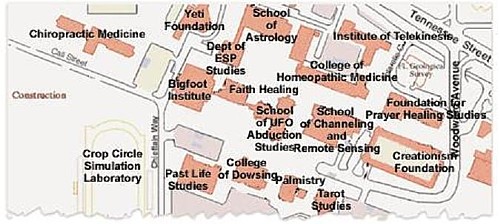
Well, I have had no response from Professor Diamond, so I’m going to post it now.
The cash
Again, all has been revealed by James Gray.
"The correspondence shows that millions of pounds has been pledged by anthroposophical organisations to fund the Centre’s work. The bulk (£1.5m) will come from the foundation of the Raphael Centre, a private anthroposophical clinic in Kent that works with those suffering from complex neurological disabilities and from cancer. The Centre’s treatments include eurythmy, chiropractic, mistletoe therapy, oil-dispersion bath therapy and therapeutic hyperthermia.
A further €1.5m has been pledged by the Software AG Foundation. The Foundation – the charitable arm of a German software firm – funds various anthroposophical projects around the world, including the Steiner Academy in Hereford. (See Alicia Hamberg’s blog for more on Software AG’s relationship with anthroposophy.)"
It’s fascinating that the Hereford Steiner Academy tried to disguise the source of its funding.
The outcome
According to a rumour on Twitter, the University has decided not to proceed with the chair. And I was also told that the BA (Hons) Social Pedagogy degree is not in fact running this year. Will that be abandoned too?
If the rumour is right, one wonders what Stefan Geider will say in his talk. "Head, Heart and Hands: Dunlop Centre for Integrative Health Care and Management”, at the anthroposophists’ conference in New Lanark (22 – 24 May). Incidentally it’s worrying that this conference appears to be sponsored by "NHS National Services Scotland".
Although, if the rumour is correct, the University has made the right decision in the end, it is worrying that serious academics in dark suits have spent two years discussing the matter, The proper reaction would have been, when the proposal was first made, to say "you must be joking, this is a medical school". That would have saved endless time spent in meetings to discuss what’s obviously a preposterous proposal. But according to the documents that Gray revealed, it seems very likely that it would have gone through if it were not for the fuss raised by bloggers. Can these senior academics not use Google? Why weren’t they aware of the nature of their proposals?
The really bad interpretation of these events is that they were well aware that they were promoting dangerous pseudo-science, but allowed themselves to be blinded to that fact by the sight of large cheques. Donations of almost £3 million can have a hypnotic effect on vice-chancellors. I do hope that isn’t the case. It would be even worse than the only alternative that I can see, and that is that senior managers can’t distinguish between pseudo-science and real science.
Watch this space for further developments.
Follow-up
28 April 2012. The comments on Paul Jump’s article in Times Higher Education seem to have disappeared. You can still see them, as of 08.49 this morning, in the Google cache, preserved at freezepage.com.
29 April 2012. Comments now restored at Times Higher, and a new one from Ben Goldacre
"Senior people from Aberdeen University reading this comment thread should take note of exactly who supports them: anonymous unnamed shouters who offer only childish abuse and dishonest personal smears. These are your allies now. It is downhill from here"
Robin McKie and Lauura Hartmann cover the Aberdeen scandal nicely in the Observer: Holistic unit will ‘tarnish’ Aberdeen University reputation. But they fail totally to acknowledge their sources, in particular James Gray. That is pretty smelly journalistic ethics.
3 May 2012. As so often, the last word on the scandal of Aberdeen’s flirtation with the endarkenment has come from Laurie Taylor, in Times Higher Education.
|
“Hands off our northeastern Scottish colleagues.” That was the vigorous response of Janet Fluellen, our Director of Curriculum Development, to all those critics who have lined up to attack the University of Aberdeen’s proposed chair in alternative medicine. Ms Fluellen admitted that she was not “totally familiar” with the anthroposophical basis of the new post, or indeed with the manner in which this distinctive philosophy allowed for the complex interplay between physiological and spiritual processes in healing. Neither was she “thoroughly au fait” with the empirical basis for the discipline’s claim to cure cancer with the use of mistletoe. She did, however, feel that “a proper university” should always be open to “new, exciting disciplines”, and instanced our own university’s Department of Rectal Communication, which had gone “from strength to strength in recent years under the exemplary leadership of Professor D.C. Butt”. She reminded our reporter Keith Ponting (30) that there had been widespread scepticism about a discipline that stressed the psychological importance of shifting the site of consciousness from the cortex to the rectum. But advances in thermal imaging had now confirmed many of the discipline’s original claims about the crucial part played by the rectum in unconscious communication. Professor Butt himself told Ponting that he appreciated Ms Fluellen’s “vote of confidence” in his discipline. “In the early days, I was one of the very few people in UK universities who made a habit of speaking through my arse. But even a cursory survey of higher education today would show that the practice has now become widespread. That itself is a great testament to the discipline of rectal communication.” |
8 May 2012
It seems the rumour was true. It seems that this mail was sent only internally. It will be interesting to see what public announcement is made.
|
Subject: Update on proposed Chair in Integrative Health Care Management
Dear colleagues, As some of you may be aware from press reports and social media, the University’s Governance and Nominations Committee met today to consider a proposal to establish a Chair in Integrative Health Care Management. The statement below gives the Committee’s decision and how this was reached: The University has decided not to take forward a current proposal to establish a Chair in Integrative Health Care Management. Following discussion and consideration of the issues involved, the University’s Governance and Nominations Committee agreed that given the need for sustainability of funding for the longer-term, the University could not satisfy its requirement for the highest standards of scientific rigour with the funding model proposed, in particular the aspirations of potential donors to establish a Centre of Complementary Medicine. The Committee further agreed that research to investigate the evidence base for the effectiveness or otherwise of complementary therapies in the treatment of disease was a legitimate academic endeavour, provided that it could be supported by sustainable and unrestricted academic research funding. Regards Communications team |
The dropping of this daft proposal was undoubtedly a triumph for bloggers, especially James Gray. My guess is that if there had been no fuss, the money would have been taken quietly. Of course it wouldn’t have stayed quiet for long. It amazes me just how ignorant of the blogosphere some senior academics seem to be.
The statement is, I must say, pretty disgraceful. It makes no admission at all that anthroposophy is a nonsensical mystical cult. All universities, in fact all big organisations, engage in this sort of dishonest doublespeak, but it’s particularly unpleasant when universities do it. They have done the right thing, probably for more or less the right reasons, but then give false reasons. I suppose they do this to try to save face. In fact it has the opposite effect.
11 May 2012. Paul Jump, in Times Higher Education, reported on the official withdrawal: Aberdeen decides against alternative medicine chair. He quotes form this letter, sent to Aberdeen’s VC on the day the annuncement was made public.
Dear Professor Diamond and Mr Purdon,
Thanks for sending the press release. Actually I got it last night (I have a lot of friends in Aberdeen since my son graduated there last summer).
I posted it on my blog, at https://www.dcscience.net/?p=5261#080512As you see, I am delighted to see that you made the right decision. But, if I may say so, the wording of your press release is a bit of a PR disaster.
It is almost incomprehensible and (as you see from the comments too), rather than protecting your reputation, it invites laughter. All you had to do was to say something like “we have decided that a chair of anthroposophical medicine is not appropriate in a medical school and we shall therefore decline the offer of funding for the chair”. That would have been simple, it would (I imagine) be true and it would have brought credit on the university.
It’s true that for anyone who knew about anthroposophy, the decision should have taken 5 minutes not two years, but no need to emphasize that in the press release.
I do hope, quite seriously, that you consider offering an honorary degree to James Gray. It was, above all. his blog that saved Aberdeen for making a dreadful mistake, His blog (I imagine), and mine (certainly) were not intended to denigrate the university, but to save it from denigrating itself.
Best regards
David Colquhoun
13 May 2012. A letter was published in the Observer from a group of people who are concerned about Michael Gove’s policy on Steiner schools [download as pdf]
Schools of pseudoscience pose a serious threat to educationMaharishi and Steiner schools are just as dangerous as creationist schools
A lot of public concern has been expressed over the potential establishment of creationist free schools. This concern resulted in the government changing the rules for free schools to prevent them from teaching pseudoscience (“Richard Dawkins celebrates a victory over creationists“). However, not enough attention has been paid to two equally grave threats to science education, namely Maharishi and Steiner schools. Maharishi schools follow the educational methods of the Maharishi Mahesh Yogi, guru of the transcendental meditation movement, while Steiner education is based on an esoteric/occultist movement called anthroposophy, founded by Austrian mystic Rudolf Steiner (“Holistic unit will ‘tarnish’ Aberdeen University reputation“). The Maharishi school has as its specialist subject the “science of creative intelligence”, which is not based on science. It also teaches a system of herbal medicine, most of which lacks evidence of efficacy and safety. Anthroposophy is centred on beliefs in karma, reincarnation and advancing children’s connection to the spirit world. The first Steiner academy opened in 2008, with a free school to open this September. The first Maharishi school opened last September. Both groups have interviews to open more schools in 2013. We believe that the new rules on teaching pseudoscience mean that no more of these schools should open. Pavan Dhaliwal head of public affairs, British Humanist Association; Edzard Ernst professor of complementary medicine, Exeter University; David Colquhoun professor of pharmacology, University College London and blogger, dcscience.net; Simon Singh science writer; Andy Lewis Quackometer.net; Alan Henness zenosblog.com; Melanie Byng; Richard Byng medical academic; James Gray; Mark Hayes; David Simpson |
We all know that chiropractors feel pretty desperate, after their job has been revealed as baseless (much more information at ebm-first). Nonetheless it was very surprising when I was alerted by Twitter to the fact that the London Chiropractors were claiming to have been chosen by UCL as a "Centre of Excellence".

That was the heading in the whole page devoted to crowing about this designation. The page, as it was on18th April, can be seen on freezepage.com. They even boast about our 21 Nobel prizewinners, as though they had endorsed chiropractic.
"London Chiropractor has recently been designated as a “Centre of Excellence” by University College London. The University is among the world’s leading universities as can be seen by its ranking in a variety of performance areas. Twenty-one Nobel prizewinners have come from the University’s community".
The triumphalist crowing goes on
"The designation of London Chiropractor as a Centre of Excellence is something that we are sincerely proud of. It distinguishes our clinic while providing impetus to carry on with our multi-disciplinary and evidence based treatment strategies while looking for new ways in which to improve on all aspects of our clinic at the same time and in a continuous manner."
But chiropractic is undoubtedly in deep trouble, after more that 600 complaints were submitted to the General Chiropractic Council (GCC). The GCC was forced to renounce what has always been a central myth of chiropractic, the "subluxation". The fact that most of the complaints have been rejected has revealed huge deficiencies in the GCC (some of which it recently admitted). It also reveals the uselessness of the Council for Health Regulatory Excellence (CHRE).which is meant to supervise them. More details at quackometer, Chiropractors at War with their Regulator, the GCC.
In the words of Richard Brown (president of the BCA) himself,
"The BCA sued Simon Singh personally for libel. In doing so, the BCA began one of the darkest periods in its history; one that was ultimately to cost it financially,"
Needless to say, chiropractors are trying to cash in on the Olympic games, sadly, with a little success. I suppose that invoking UCL. was part of that attempt. Like so many of chiropractors’ attempts to defend themselves, it misfired badly.
The inspection of evidence that followed the attempt by the British Chiropractic Association (BCA) to sue Simon Singh showed that he was entirely justified to describe many of their treatments as “bogus” and “without a jot of evidence”.
A quick email to the UCL authorities quickly determined that the claimed endorsement was not true. Attempting to access this page now leads to “page not found". The page vanished on Sunday 22nd April, and a near identical page for the Broadgate Spine and Joint Clinic had already vanished on Friday 20th April. While it is true that two surgeons from UCL’s Institute of Sports Medicine have worked in the same building, they neither use chiropractic nor endorse it.
I’m assured that the alleged endorsement never happened. London Chiropractors won’t say where it came from. It seems that it was simply made up. I think that’s called a lie. I presume it is a sign of the desperation of chiropractors.
Follow-up
A new study of the effects of eating red meat and processed meat got a lot of publicity. When I wrote about this in 2009, I concluded that the evidence for harm was pretty shaky. Is there reason to change my mind?
The BBC’s first report on 12 March was uncritical (though at least it did link to the original paper -big improvement). On 16th March, Ruth Alexander did a lot better, after asking renowned risk expert, David Spiegelhalter. You can hear him talk about it on Tim Harford’s excellent More or Less programme. [Listen to the podcast].
David Spiegelhalter has already written an excellent article about the new work. Here’s my perspective. We’ll see how you can do the calculations yourself.
The new paper was published on Archives of Internal Medicine [get reprint: pdf]. It looked at the association between red meat intake and mortality in two very large cohort studies, the Health Professionals Follow-up Study and the Nurses’ Health Study.
How big are the risks from red meat?
First, it cannot be said too often that studies such as these observe a cohort of people and see what happens to those people who have chosen to eat red meat. If it were the high calorie intake rather than eating meat that causes the risk, then stopping eating meat won’t help you in the slightest. The evidence for causality is reconsidered below.
The new study reported a relative risk of death from any cause were 1.13 for one 85 g serving of red meat per day, and 1.20 for processed meat. For death from cardiovascular disease the risks were a slightly higher, 1.18 for read meat and 1.21 for processed meat, For dying from cancer the relative risks were a bit lower, 1.10 for red meat and 1.16 for processed meat.
A relative risk of 1.13 means that if you eat 85 g of red meat every a day, roughly a hamburger for lunch, your risk of dying in some specified period, e.g. during the next year, is 13 percent higher than that for a similar person who doesn’t eat the hamburgers.
Let’s suppose, for the sake of argument, that the relationship is entirely causal. This is the worst case (or perhaps the best case, because there would be something you could do). How big are your risks? Here are several ways of looking at the risk of eating a hamburger every day (thanks to David Speigelhalter for most of these). Later we’ll see how you can calculate results like these for yourself.
- If you eat a hamburger every day, your risk of dying, e.g in the coming year, is 13 percent higher than for a similar person who doesn’t eat hamburgers.
- In the UK there were around 50 cases of colorectal cancer per 100,000 population in 2008, so a 10% increase, even if it were real, and genuinely causative. would result in 55 rather than 50 cases per 100,000 people, annually.
- But if we look at the whole population there were 22,000 cases of colorectal cancer in the UK in 2009. A 10% increase would mean, if the association were causal, about 2200 extra cases per year as a result of eating hamburgers (but no extra cases if the association were not causal).
- Eating a hamburger a day shortens your life expectancy from 80 years to 79 years (sounds rather small)
- Eating a hamburger a day shortens your life by about half an hour a day, if you start at age 40 (sounds quite serious)
- The effect on life expectancy is similar to that of smoking 2 cigarettes a day or of being 5 Kg overweight (sounds less serious).
- The chance that the hamburger eater will die before the similar non-hamburger eater is 53 percent (compared with 50 percent for two similar people) (sounds quite trivial).
Clearly it isn’t easy to appreciate the size of the risk. Some ways of expressing the same thing sound much more serious than others. Only the first was given in the paper, and in the newspaper reports.
The results. Is there any improvement in the evidence for causality?
The risks reported in the new study are a bit lower than in the WCRF report (2007) which estimated a relative risk of dying from colorectal cancer as 1.21 (95% Confidence interval 1.04–1.42) with 50 g of red or processed meat per day, whereas in the new study the relative risk for cancer was only 1.10 (1.06-1.14) for a larger ‘dose’, 85 g of red meat, or 1.16 (1.09-1.23) for processed meat.
A 2010 update on the 2007 WCRF report also reported a similar lower relative risk for colorectal cancer of 1.16 for 100 g/day of red or processed meat This reduction in size of the effect as samples get bigger is exactly what’s expected for spurious correlations, as described by Ioannidis and others.
One reason that I was so sceptical about causality in the earlier reports was that there was very little evidence of a relationship between the amount of meat eaten (the dose) and the risk of dying (the response), though the reports suggested otherwise. The new study does seem to show a shallow relationship between dose and response, the response being the relative risk (or hazard ratio) for dying (from any cause).
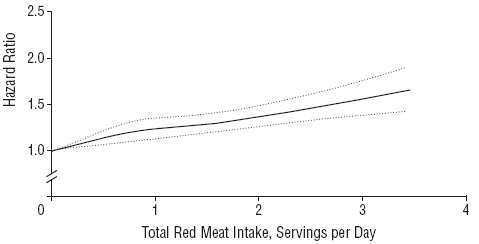
The Figure shows the relationship in the Nurses’ Health Study (it was similar for the other study). The dotted lines are 95% confidence limits (see here), and the lower limit seems to rule out a horizontal line, so the evidence for a relationship between dose and response is better than before, But that doesn’t mean that there is necessarily a causal relationship.
There are two important problems to consider. The legend to the figure says (omittng some details) that
"The results were adjusted for age; body mass index; alcohol consumption, physical activity level, smoking status ; race (white or nonwhite); menopausal status and hormone use in women, family history of diabetes mellitus, myocardial infarction, or cancer; history of diabetes mellitus, hypertension, or hypercholesterolemia; and intakes of total energy, whole grains, fruits, and vegetables."
So the data in the graph aren’t raw observations but they’ve been through a mathematical mill. The corrections are absolutely essential, For example, Table 1 in the paper shows that the 20% of people who eat the most red meat had almost twice the total calorie intake of those who eat the least red meat. So without a correction there would be no way to tell whether it was high calorie intake or eating red meat that was causing an increased risk of death. Likewise, those who eat more red meat also smoke more, drink more alcohol, are heavier (higher body mass index) and take less exercise.
Clearly everything depends on the accuracy of the corrections for total calorie intake etc. It was done by a method called the Cox proportional hazard multiple linear regression. Like any other method that makes assumptions, and there is no easy way to check on how accurate the corrections are. But it is known "that studies on colon cancer that adjusted for larger number of covarariates reported weaker risk ratios than studies which adjusted for a smaller number". The main problem is that there may be some other factor that has not been included in the corrections. Spiegelhalter points out
"Maybe there’s some other factor that both encourages Mike to eat more meat, and leads to a shorter life.
It is quite plausible that income could be such a factor – lower income in the US is both associated with eating red meat and reduced life-expectancy, even allowing for measurable risk factors."
How to do the calculations of risk.
Now we come to the nerdy bit. Calculations of risk of the sort listed above can be done for any relative risk, and here’s how.
The effect on life expectancy is the hardest thing to calculate. To do that you need the actuaries’ life table. You can download the tables from the Office of National Statistics. The calculations were based on the “England and Wales, Interim Life Tables, 1980-82 to 2008-10“. Click on the worksheet for 2008 – 10 (tabs at the bottom). There are two tables there, one for males, one for females. I copied the data for males into a new spreadsheet, which, unlike that from ONS, is live [download live spreadsheet]. There is an explanation of what each column means at the bottom of the worksheet, with a description of the calculation method. In the spreadsheet, the data pasted from the full table are on the left.

and lower down we see life expectancy, $ e_x $, from age 40 is 39.8 years

On the right is an extended life table which is live. You enter into cell H5 any relative risk (hazard ratio), and the table recalculates itself.
Lower down, we see that life expectancy from age 40 with risk ratio 1.13 is 38.6 years.
If you enter 1.00 on cell H5 (highlighted), the table on the right is the same as that on the left (there are some trivial differences because of the way that ONS does the calculations). The life expectancy of a 40 year old man is 39.8 years, so the average age of death is 79.8 years. If you enter 1.13 in cell H5, the relative risk of dying (from any cause) for a hamburger per day, the table is recalculated and the life expectancy for a 40 year old man falls to 38.6, so the mean age of death is 78.6 years (these numbers are rounded to 80 and 79 in the summary at the top of this page).
The Excel sheet copies the relative risk that you enter in cell H5 into column O and uses the value in column O to multiply the risk of death in the next year, $ q_x $. So, for example, with a hazard ratio of 1.13, the risk of dying between 40 and 41 is increased from $ q_{40} = 0.00162 $ to $ q_{40} = 0.00162 \times 1.13 = 0.00183 $, and similarly for each year. If you want the relative risk to vary from year to year, you can enter whatever values you want in column O.
Loss of one year from your life expectancy when you are 40 implies loss of about half an hour per day of remaining life: (365 x 24 x 60)/(40 x 365) = 36 minutes per day. This is close to one microlife per day. A microlife is defined as 30 minutes of life expectancy. A man of 22 in the UK has 1,000,000 half-hours (57 years) ahead of him, the same as a 26 year-old woman. David Spiegelhalter explains that loss of one microlife per day is about the same risk as smoking two cigarettes per day. This is put into perspective when you realise that a single chest X-ray will cost you two microlives and a whole-body CT scan (which involves much larger exposure to X-rays) would cost you 180 microlives.
The last way of expressing the risk is perhaps the most surprising. The chance that someone who has a hamburger for lunch every day will die before a similar non-hamburger eater is 53 percent (compared with 50 percent for two similar people). This calculation depends on a beautifully simple mathematical result.
The result can be stated very simply, though its derivation (given by Spiegelhalter here, at the end) needs some maths. The probability that the hamburger eater will life longer than the non-hamburger eater is
\[ \frac{1}{h+1}. \]
When there is no risk, $ h = 1$, this is 0.5, a 50:50 chance of one person dying before the other. When the relative risk (hazard ratio) is $ h = 1.13 $ it is
\[ \frac{1}{1.13+1} = 0.47, \]
so there is a 100 – 47 = 53% chance that hamburger eater dies first.
Another way to put the same result is to say that when a hazard ratio, $ h $, is kept up throughout their lives, the odds that hamburger eater dies before the non-hamburger eater is precisely $ h $. The odds of an event happening are defined as the ratio between the probability of it happening, $ p $, to the probability of it not happening, $ (1-p) $, i.e.
\[ h = \frac {p} {(1-p)}. \]
Rearranging this gives
\[ p = \frac {h} {(1+h)}. \]
When the risk ratio is $ h=1.13 $ this gives $ p = 0.53 $, as before.
Conclusions
Based largely on the fact that the new study shows risks that are smaller than previous, smaller, studies, it seems to me that the evidence for the reality of the association is somewhat weaker than before.
Although the new study, unlike the earlier ones, shows signs for a relationship between the amount of read meat eaten and risk of death, the confounding factors (total calories eaten, weight, smoking etc) are so strong that the evidence for causality is critically dependent on the accuracy of the corrections for these factors, and even more dependent on their not being another factor that has not been included.
It can’t be said too often that if the association is not causal then refraining from eating red meat won’t have the slightest benefit. If it were, for example, the high calorie intake rather than eating meat that causes the risk, then stopping eating meat won’t help you in the slightest.
Even if the increased risk was entirely caused by eating meat, the worst consequence of eating red meat every day is to have a 53% chance of dying before someone who doesn’t eat much meat, rather than a 50% chance.
I won’t become a vegetarian just yet (or, at least if I do it will be on ethical grounds, not because of health risk).
Acknowledgment. I’m very grateful to Professor David Spiegelhalter for help and discussions about this post.
[Use Firefox if embedded videos do not show in Chrome]

Andrew Lansley’s Health Bill (HASSB) aims to change the NHS into something more like the US system, which gives worse results at twice the cost.
The only possible reason for wanting to do that is simple far-right ideology. No wonder that no hint was given of its intentions before the election.
On the contrary, David Cameron stated repeatedly that there would be no top-down reorganisation of the NHS. That turned out to be a straight lie.
“First let me tell you what we are not going to do. There will be no more of those pointless reorganisations that aim for change, but instead bring chaos.” [David Cameron speaking to Royal College of Nursing in 2009, before election].
We all know that money must be saved. But the two major disasters of the coalition government don’t save any money.
On the contrary, both tuition fees and NHS-wrecking will cost taxpayers’ money. The tuition fees are done (for the time being) but there is still time to save the NHS.
The best simple explanation that I’ve found is by Dr Max Pemberton in the Telegraph: Read this – and prepare to fight for your NHS. The Bill is three times longer than the 1946 Bill that brought the NHS into existence.
“The power to determine the services that make up the NHS will be transferred from the Secretary of State to newly created Clinical Commissioning Groups (CCGs), which are unelected. Members will include GPs but also company chief executives who can, if they wish, outsource decisions about the appropriate level of services offered to companies with commercial interests. This is what the Government means when it says it is handing GPs £60 billion of NHS money. ”
“Monitor. This quango is composed of unelected and unaccountable individuals. It will not have overarching responsibility – which the Government does currently – to ensure that everyone’s health needs are met.” “It will have the power to decide, on purely financial grounds, if an area loses its existing range of hospital services, such as A&E departments, with no duty to consider alternative provision.
“With so many different providers of health care created under this Bill, those with complex health care needs may not receive the joined-up medical care that the NHS now works hard to provide.”
“Less profitable patients – those requiring complex levels of care from multiple individuals and areas of expertise, for example – may be sidelined by these private companies. ”
“the Bill allows CCGs to contract out commissioning functions to private accountancy, health insurance and management consultant firms, which will be able to decide what care is provided free at the point of use through the NHS and what is not. This means that profit-making companies will be able to provide your clinical care and also decide what you’re entitled to under the NHS and from which care providers.” “There is the potential for commercial conflicts when the needs of shareholders come between doctors and patients. ”
“Providers, too, can reduce levels of service provision and entitlement to NHS-funded care and there are no restrictions on charging for non-NHS care.”
“Now, up to 49 per cent of income can be generated from private income. This means that almost half the beds currently used for NHS care could be given over to private patients.” “This could create a two-tier system in hospitals” and “create a conflict of interest, with hospitals having a clear incentive to encourage as many patients as possible to use the private half of their facilities. Moreover, hospitals can decide when to discharge patients. The requirement for coordinated discharge and aftercare of patients between health and social care is abolished in the Bill. “
Why is the bill needed at all?
Most people believe that there is no need for a bill. The real aim appears to be in part 3, which proposes a vast increase in private providers. Oliver Huitson says
“A US report comparing the health services of 7 major economies ranked the NHS 1st in terms of efficiency, and 2nd overall. The US, which has vast private sector involvement and much greater use of GP commissioning, was ranked last despite spending more than twice as much per head as the UK”
” Despite being ranked as one of the most efficient and equitable health services in the developed world, the Conservatives are determined to remodel it in the image of one of the least efficient – all in the name of “improving efficiency”.”
Although most GPs are in favour of having more say in what happens, even the first parts of the bill are a mess. They are advertised as reducing bureaucracy and reducing costs. According to the Financial Times, they do exactly the opposite.
“Here was the original NHS bureaucracy in graphic form”
Here is the new NHS bureaucracy in graphic form
Ed Miliband pointed out that the number of NHS statutory organisations was growing from 163 to 521 – including “health and wellbeing committees,” “national commissioning boards”, “clinical networks”, “clinical senates” and so on.
So much for reduced bureaucracy.
Who thinks this is not a good idea?
Almost everyone. Not just the BMA which Lansley dismisses as a Trade Union, despite the fact that now (unlike in 1948) the BMA is voting against the financial interests of its members.
The Royal College of General Practitioners says Drop the Bill. So do Royal College of Nursing. Royal College of Midwives, Faculty of Public Health, Chartered Society of Physiotherapists, the Patients’ Association, among others. Almost the only support left is from the NHS Alliance, a tiny organisation run by Michael Dixon, friend of the Prince of Wales and advocate of quack medicine. The NHS alliance ran its own poll. A total of 100 people have voted so far, 99 of them against the Alliance’s policy. Some support. A rather good infographic shows how the balance lies.
The BMA’s General Practitioners Committee, which represents all GPs in the UK says [read full letter]
“1. Formally reaffirms its opposition to the NHS Health and Social Care Bill;
2. Believes that if passed the Bill will be irreversibly damaging to the NHS as a public service, converting it into a competitive marketplace that will widen health inequalities and be detrimental to patient care; . . . .”
In contrast, the e-petition to the government, started by Dr Kailash Chand OBE, states simply that it “Calls on the Government to drop its Health and Social Care Bill.”. It now has over 167,000 signatories. But despite the fact that petitions with over 100,000 signatures are meant to trigger a debate in the House of Commons, the backbench business committee of MPs has decided not to debate the e-petition.
So many people have rallied to oppose the daftness that it’s invidious to single out names. Nonetheless special mentions must go to Clare Gerada (@clarercgp on Twitter) (chair of the RCGP), and to Clive Peedell (@cpeedell) (oncologist and co-chair NHS Consultants’ Association) -read his Bevan’s Run blog. Among academics, Allyson Pollock and Martin McKee have done superb work on the details.
Most telling of all, some of the people who started by supporting Lansley have changed their minds. One concern about the “any qualified provider” idea is that it could open the door to quackery. Any “qualified” homeopath could bid for business at a competitive rate -sugar pills don’t cost much. Michael Dixon is one such.
Dr Sam Everington of Tower Hamlets is another. Services provided by his practice include “referrals to Inside Out Health and Wellbeing Ltd“. This private company will sell you fraudulent scams like homeopathy and kinesiology at £50 per session, among other nonsense (according to Companies House, it was wound up on 17 January 2012). He’s also associated with the “College of Medicine” (the reincarnation of the Prince of Wales’ Foundation). See also, Dr Margaret McCartney’s blog. As chair of the first Clinical Commissioning Group (CCG) he was embraced by Cameron. His Bromley-by-Bow surgery was host for Andrew Lansley’s first speech as health secretary after the 2010 election, and also host to the Prince of Wales..
But now even Everington has turned against the Bill (read the full letter).
“Dear Prime Minister
The Board of NHS Tower Hamlets Clinical Commissioning Group ask you to reflect and to withdraw the Health and Social Care Bill.”
“We care deeply about the patients that we see every day and we believe the improvements we all want to see in the NHS can be achieved without the bureaucracy generated by the Bill.
Your government has interpreted our commitment to our patients as support for the bill. It is not.”
And, on 1st March, another request to drop the bill, from the East London Integrated Care (ELIC is a not-for-profit social enterprise which is owned and run by local people and health professionals”). Read the full letter.
“Thursday, 1 March 2012 N1 5LZ
Dear Prime Minister,
The Board of City & Hackney Clinical Commissioning Group (CCG) join Tower Hamlets
and most other GPs and nurses and ask you to withdraw the Health and Social Care Bill.”
Is it really privatisation?
If you feel reassured by Lansley’s assurances that his measures aren’t de facto privatisation, just watch this video. It reveals some of the network of lobby groups that are circling the NHS, eager to take your money. For example, the lobby group, Policy Exchange, “Cameron’s favourite”, co-founded by Francis Maude, a member of Cameron’s cabinet, and is lobbying for more private sector provision of NHS services. One of the companies that it’s taken money from is called Tribal, which wants to take over commissioning from GPs. One of the directors of Tribal has described Andrew Lansley’s reforms as being “denationalisation of health services in England”.
So you don’t need to listen to left-wingers. The industry itself is in no doubt that it’s privatisation, and it’s ready and waiting to grab our money..
And of all unlikely allies, the vice chair of the British Holistic Medical Association has written a powerful letter about how the bill really would result in privatisation.
The likely consequences have been put well by Ben Goldacre in his What will happen with the NHS bill, in 5 tweets. The following points are based partly on this.
- GPs know they’re being set up to fail by being given commissioning powers, which they have neither the time nor the expertise to do properly.
- After GPs fail, private commissioning expertise will be needed. Large private companies will be given the job and they will come to operate like health insurers.
- These large bodies, like public/private insurance companies, will be able to pick and choose patients. They will naturally prefer the ones from whom they can make the most money (and not the sick or the old). Note that there is no geographical responsibility in the bill
- Small differences will gradually emerge in what services they offer. Top up plans will become available. And that will be the end of the NHS in the form in which we know it.
The only way that the proposals make any sense at all is if the underlying aim is to destroy the NHS, in anything like its present form. I believe that Lansley’s aims are much more to do with his personal political ideologies than anything to do with health. Those ideologies are far to the right of anything envisaged by Margaret Thatcher.
The politics. Where are the Lib Dems?
I voted Lib Dem in 2010, and I said precisely why. Of course I didn’t expect they’d get a majority. They were just the party that I found least objectionable. Like so many others I watched with horror as the numbers came out. There was no other option but to form a coalition with Conservatives. Well, I’d have been happier with no coalition, but the danger of that producing an overall majority for Conservatives after a year or so made that a very risky option.
When the coalition formed I was alarmed by the prospects for both education and for the NHS. I was less alarmed by the latter, because Cameron had said so many times that he had no intention of messing with the NHS. That turned out to be a direct lie. I could scarcely believe it when Lansley produced a plan after the election for the biggest reorganisation ever in the NHS, something that had not been foreshadowed in any way in the Conservative manifesto. This was one of the most dishonest bits of political manoeuvring that I’ve ever encountered.
Clearly we were spending more than we could afford. What’s unforgivable is to do things that actually cost the taxpayer more than before. Such actions are quite the opposite of cuts. Yet they are being done in the two areas, than any others, that have got Lib Dem voters angry.
(a) The £9k tuition fees cost the taxpayer more than the £3k fees did, because of the financing arrangements. I can see no conceivable reason for spending more taxpayers’ money than before apart from (Conservative) political ideology. That’s done (for now) so back to the main topic of this post, the NHS.
(b) It seems inevitable that Lansley’s proposals will cost money, not save money. Presumably that was predicted in the risk register, the concealment of which is a disgrace. See Liberal Conspiracy and the Green Benches blogs. The Information Commissioner ordered the release of the risk register, but the coalition refused (so much for transparent government). They appealed so now it goes to an Information Tribunal.
An Early Day Motion in the House of Commons urged release. It was signed by only 16 Lib Dems.
The bill started to fall apart in a major way when, on February 6th, The Times reported that
“Andrew Lansley should be taken out and shot,” says a Downing Street source. “He’s messed up both the communication and the substance of the policy.”
But Cameron, instead of grasping the chance, decided to back a loser.
Some Lib Dems have stuck to their principles. For example
John Pugh MP, Co-Chair of the Lib Dem Parliamentary Health Committee, re-established the Beveridge group, and wrote a letter to parliamentarians to explain why.
Andrew George MP wrote Health Bill has no friends. Dignified withdrawal would be best.
On 13 February, hearts soared when Lib Dem peer Shirley Williams spoke out at last. She urged Lansley to drop part 3 of the bill, the part that deals with privatisation. The elation didn’t last long though. Nick Clegg told the BBC: “Andrew Lansley is the architect of the NHS bill. He cares passionately about the NHS. He’s the right man for the job and he must see it through.”. Yes, I know about Cabinet solidarity, but it’s hard to think of any surer way to lose elections than to make statements like that. Even many Conservatives don’t believe it: see, for example, Dr Rachel Joyce on Conservative Home.
On 24th February, the Lib Dem president, Tim Farron MP, spoke up at last. “Mr Farron told ITV the bill should have been “massively changed” or dropped earlier and he wanted plans for more competition in the NHS to be dropped”.
On 26 February, Nigel Crisp, described the bill as a confusing mess that risks setting the NHS back. Crisp was formerly NHS chief executive and the permanent secretary at the Department of Health from 2000 to 2006, and is now a crossbench peer. Like everyone else, he was ignored.
The elation about Shirley Williams intervention didn’t last long. On 27th February a joint letter from Williams and Clegg claimed that they’d fixed the bill. The letter was quickly subjected to a bullshitometer analysis, by Health Policy Insight. Bafflingly, Lansley declared in public that he’d “changed his mind” about the privatisation, while at the same time Lansley and Cameron claimed that nothing much had changed: see Downing Street in knots as it plays down Nick Clegg’s NHS concessions, and Paul Corrigan’s blog.
March 1st saw two more blows for Clegg and Lansley. First, as reported thus in the Independent.
“Graham Winyard, the former deputy Chief Medical Officer, resigned from the party in protest at the leadership’s backing for the Bill. Dr Winyard, who was chairman of Winchester Liberal Democrats until last year, told Mr Clegg in a letter: “It is just not sensible to impose this top-down reorganisation on an NHS struggling to meet the biggest financial challenge in its history. To continue to do so in the face of near unanimous opposition from patient, staff and professional organisations simply invites slow motion disaster both for the NHS and for the party.” He said that he had no option but to resign “with great sadness”. “
Then, also on 1st March, Dr Laurence Buckman, chairman of the BMA’s GPs committee, wrote to 22,000 GPs. [full letter]
- Believes the bill will compromise the role of GPs, and could cause irreparable damage to the relationship between GPs and their patients.
- Believes the bill to be complex, incoherent and not fit for purpose, and almost impossible to implement successfully, given widespread opposition across the NHS workforce.
- Believes that passing the bill will be an irresponsible waste of taxpayers’ money, which will be spent on unnecessary reorganisation rather than on patient care, as well as increasing the running costs of the NHS from the processes of competition, and transaction costs
The chaos that the Lib Dems now find themselves in is illustrated clearly by a post on Liberal Democrat Voice by Andrew Tennant. He’s apparently an unreconstructed 19th century Whig, masquerading as a 21st century liberal. The comments on the post reveal the mess the party has got itself into by refusing to drop the bill.
More to the point, look at the proper detailed analyses done by people who are a lot more knowledgeable than Andrew Tennant, or Andrew Lansley.
- RCGP Report Stage Briefing – Health and Social Care Bill February 2012
- Allyson Pollock explains, line by line, a lot of problems that “Recent amendments put forward by the Liberal Democrats do not address”.
- Statement on Liberal Democrat amendments
Prof Allyson Pollock, David Price, Peter Roderick, and Tim Treuherz
28 February 2012 - Royal College of Physicians, in The Lancet “What began as a ham-fisted attempt to modernise the NHS has become a grotesque political disaster for government.”
- The NHS bill could finish the health service – and David Cameron Polly Toynbee says it as it is.
- A big document by SOSNHS -great source of links Breaking the NHS.
There is one last chance for the Lib Dems to restore their reputation. Lib Dems hope to finally kill health reforms. “Liberal Democrat activists will defy Nick Clegg over the Government’s controversial health reforms by seeking to “kill” them at a party policy-making conference next week.”
Good luck to them. They could save the Lib Dems if they win. Much more importantly, they could save the NHS.
Follow-up
Sunday 4 March. Yet another story of corruption, this time in the Mail on Sunday.
“The head of the NHS regulator that is meant to ensure fairness when private-sector firms bid for public contracts is also the chairman of a huge company whose Health Service business is worth £80 million a year – and set to increase massively.
As the chairman of the NHS Co-operation and Competition Panel (CCP), Lord Carter of Coles is paid £57,000 for two days’ work each week. But his other role, as chairman of the UK branch of the American healthcare firm McKesson, is more generously rewarded. Last year it paid him £799,000.”
“Dr Clare Gerada, chairman of the Royal College of General Practitioners, said: ‘He cannot have any credibility when he is also heading a company with such huge interests in the very contracts his organisation is meant to police.”
See also Conflicts of Interest and NHS reform.
According to a tweet from James Ball
“Politics of the #NHSbill awful for lib dems: only 17% of their current supporters back it – and only 9% of their 2010 voters.”
Sounds plausible. Are you listening, Nick Clegg?
5 March 2012. The emergency motion for the Lib Dem Spring Conference (March 10 -11) has been published. See also the blog of the heroic Dr Charles West for more details. If Clegg manages to defeat this excellent motion, the last chance to save the NHS will be gone.
10 March 2012
Bitterly disappointed by vote at Lib Dem conference, not to debate the motion to drop the NHS bill. Who do I vote for now?
One thing that one can still do is to email all Lib Dem MPs give your views. Here is a list of their email addresses (via Lindy).
bakern@parliament.uk, danny.alexander.mp@parliament.uk, alan.beith.mp@parliament.uk, gordon.birtwistle.mp@parliament.uk, brookea@parliament.uk, braket@parliament.uk, brownej@parliament.uk, hernandeza@parliament.uk, burstowp@parliament.uk, lorely.burt.mp@parliament.uk, cablev@parliament.uk, menzies.campbell.mp@parliament.uk, carmichaela@parliament.uk, nick.clegg.mp@parliament.uk, mike.crockart.mp@parliament.uk, farront@parliament.uk, daveye@parliament.uk, simon.wright.mp@parliament.uk, willottj@parliament.uk, featherstonel@parliament.uk, fosterd@parliament.uk, andrew.george.mp@parliament.uk, duncan.hames.mp@parliament.uk, stephen.gilbert.mp@parliament.uk, stephenwilliamsmp@parliament.uk, kennedyc@parliament.uk, jo.swinson.mp@parliament.uk, julian.huppert.mp@parliament.uk,hunterm@parliament.uk, simon@simonhughes.org.uk, chris.huhne.mp@parliament.uk, martin.horwood.mp@parliament.uk, hemmingj@parliament.uk, david.heath.mp@parliament.uk, hancockm@parliament.uk, pagep@parliament.uk, lambn@parliament.uk, lawsd@parliament.uk, john.leech.mp@parliament.uk, stephen.lloyd.mp@parliament.uk, michaelmooremp@parliament.uk, greg.mulholland.mp@parliament.uk, teathers@parliament.uk, tessa.munt.mp@parliament.uk, john.thurso.mp@parliament.uk, david.ward.mp@parliament.uk, webbs@parliament.uk, williamsmf@parliament.uk, williamsr@parliament.uk, pughj@parliament.uk, reida@parliament.uk, contact@danrogerson.org, susan.hislop@parliament.uk, robert.smith.mp@parliament.uk, stunella@parliament.uk, ian.swales.mp@parliament.uk
And here are email addresses for (most) Lib Dem peers)
williamss@parliament.uk, walmsleyj@parliament.uk, wallacej@parliament.uk, wallacew@parliament.uk, tordoffg@parliament.uk, topeg@parliament.uk, thomascm@parliament.uk, thomass@parliament.uk, stephenn@parliament.uk, smitht@parliament.uk, shipleyj@parliament.uk, shuttd@parliament.uk, sharpm@parliament.uk, scottrc@parliament.uk, robertsr@parliament.uk, rennardc@parliament.uk, randersonj@parliament.uk, palmerm@parliament.uk, oakeshottm@parliament.uk, northoverl@parliament.uk, newbyr@parliament.uk, millers@parliament.uk, methuenr@parliament.uk, methuenr@parliament.uk, maddockd@parliament.uk, maddockd@parliament.uk, maclennanr@parliament.uk, loombar@parliament.uk, linklaterv@parliament.uk, lestera@parliament.uk, leej@parliament.uk, kramers@parliament.uk, jonesn@parliament.uk, ecem@parliament.uk, harrisa@parliament.uk, hamwees@parliament.uk, greavesa@parliament.uk, goodhartw@parliament.uk, germanm@parliament.uk, gardens@parliament.uk, falknerk@parliament.uk, ezrad@parliament.uk, dholakian@parliament.uk, cotterb@parliament.uk, clementjonest@parliament.uk, chidgeyd@parliament.uk, carlilea@parliament.uk, brintons@parliament.uk, willisg@parliament.uk, addingtond@parliament.uk , alderdicej@parliament.uk, allanr@parliament.uk, ashdownp@parliament.uk, barkere@parliament.uk, benjaminf@parliament.uk , bonhamcarterj@parliament.uk
13 March 2012. This is really last chance day. At 11 am, the Lords debate third reading of health bill and at 2 pm the Commons have emergency debate, triggered by the e-petition, which now has more than 173,000 signatures. I sent the following email to all Lib Dem peers and MPs this morning.
|
The idea that the changes to the health bill have solved its problems is simply wrong. Before you vote, please read http://abetternhs.wordpress.com/2012/03/11/40points/ ,
That is written by a working GP who knows what he’s talking about. For the truth about the 49% disaster, read this. There are 27 professional organisations who are against the bill (see here). Do you really understand the implications better than they do? The vote at the lib dem conference gives you the mandate to vote according to your conscience. Please vote to drop the bill and start again. I voted Lib Dem at every election from 2001. If you let us down on the health bill, I will certainly not do so again. David Colquhoun |
16 March 2012. I have learned ( from Lord Shutt) that there will be a 3-line whip on Lib Dem peers to vote against Lord Owen’s amendment. And this despite the vote against the Clegg-Williams motion at the Lib Dem conference last week. This makes the much vaunted party democracy look like a bit of a joke. The only hope now is the bishops. Here is a list of their email addresses. You can also contact them through Dr Éoin Clarke’s site (from where I got the addresses)
bishop@bathwells.anglican.org, bishop@birmingham.anglican.org, chaplain@bishopofblackburn.org.uk, bishop@bristoldiocese.org, bpchester@chester.anglican.org, bishchichester@diochi.org.uk, bishop@bishopofderby.org, durham@durham.anglican.org, langrishm@parliament.uk, bshpglos@glosdioc.org.uk, bishop.christopher@cofeguildford.org.uk, bishop@hereford.anglican.org, bishop.tim@leccofe.org, bishop.lichfield@lichfield.anglican.org, bishopslodge@liverpool.anglican.org, bishop@londin.clara.co.uk, bishop@bishopscourt.manchester.anglican.org, bishop@newcastle.anglican.org, bishop@norwich.anglican.org, bishop@riponleeds-diocese.org.uk, bishop.nigel@stedmundsbury.anglican.org, bishop@bishopofwakefield.org.uk, contact@lambethpalace.org.uk, office@archbishopofyork.org
This is what I sent to them today.
|
Dear Bishop,
You will be aware of the widespread concerns about the commercialisation of the NHS. No fewer than 27 medical organisations have now come out strongly against the bill and it’s clear that, despite (or because of?) over 1000 amendments, it is a real mess. Despite the vote at the Lib Dems conference against the bill, I hear that there will be a 3-line whip in the Lords to force Lib Dem peers to vote against the very sensible proposal by Lord Owen to delay passing of the bill until the government release the assessment of the risks of passing it. This means that the Bishops will be crucial. I would like to ask you seriously to consider voting for Lord Owen’s motion on Monday. The future of the National Health Service lies in your hands Best regards |
18 March 2012. Tomorrow is last hope for stopping the bill in the Lords. The 3-line whip will, I expect, ensure the defeat of Lord David Owen’s excellent amendment. The bill will probably become law. Two tweets express the impending death of the NHS quite poignantly. On 15 March @Heardin London wrote
"For a brief period during 20th century, people gave a fuck and looked after each other. Unfortunately this proved unprofitable."
and today, from @thewritertype,
"Years from now you’ll have to explain to children what the NHS was. Then you’ll have to explain what a LibDem was."
Poetry in 140 characters.
20 March 2012.
|
The hated bill was rammed through in the House of Commons, thanks to support from Lib Dems. .The list of the peers and MPs who will make money out of privatisation is truly scary and deeply corrupt. |

|
Our undercover investigation finds evidence of nutritional therapists giving out advice that could seriously harm patients’ health
That’s the title of an article in February’s Which? magazine. (That’s similar to Consumer Reports in the USA).
“When Which? sent researchers to investigate the quality of advice from nutritional therapists, some was so bad that patients’ health was put at risk. One nutritional therapist advised against surgery and radiotherapy to treat cancer, while another ‘diagnosed’ a problem with adrenal glands without any blood-test results. Some also used unproven testing, such as iridology or mineral testing, to identify problems or diagnose conditions.”
"We sent five undercover researchers to visit three nutritional therapists each. Every researcher was equipped with a specific health-related scenario: Helen (46) and Sarah (40), recently diagnosed with Ductal Carcinoma In Situ (DCIS), the most common type of non-invasive breast cancer; Mark (56) and Linda (52), suffering with serious fatigue for the past three months; and Emily (31), trying unsuccessfully to conceive for more than a year."
|
Sarah, posing as a patient diagnosed with DCIS, visited a nutritional therapist who advised her to delay treatment recommended by her oncologist (a lumpectomy and a course of radiotherapy). The therapist suggested that Sarah follow a no-sugar diet for three to six months and told her, ‘cancer lives off sugar; if you feed it sugar it’s going to thrive. If we starve the cancer of sugar then you have a better opportunity of the cancer going away’. When Sarah asked whether the cancer could progress during this time the therapist said it was a ‘gamble’. Dr Margaret McCartney, from our panel of experts, says: ‘If cancer treatment were as simplistic as cutting out sugar, surely we would have discovered a cure. This advice is highly irresponsible.’ Our experts rated this consultation as a ‘dangerous fail’." The Patients’ Guide to magic medicine defined “Nutritional therapy: self-styled ‘nutritionists’ making untrue claims about diet in order to sell you unnecessary supplements”. That turned out to be pretty accurate. They are part of the alternative medicine fringe. The Universities Admission Service (UCAS) no longer lists any BSc/MSc degrees in "Nutritional Therapy" or "Nutritional medicine". Westminster University closed its BSc Nutritional Therapy during last year. We still don’t know the fate of the notorious (or should I say hilarious) course run at the Northern College of Acupuncture and validated (after a fashion) by the late University of Wales, but it isn’t listed for entry in 2012. [We do now: see follow-up‘] But there are a large number of university courses called "Nutrition". How many of them teach properly, and how many of them teach the nonsense that prevails in "nutritional therapy", I don’t know. The term ‘nutrition’ has turned into a dangerous minefield. It can mean almost anything, because the term is undefined. Anyone can, and does, describe themselves as a nutritionist. At one extreme you have slick pills salesman like ‘not-a-Dr’ Gillian McKeith and Patrick Holford. At the other extreme you have a fascinating and respectable subject for study. The one thing that you need to get clear is that if you want advice about nutrition, go to a dietitian not a "nutritionist". Dietitians are the properly qualified people who work in the NHS, and who are (mostly) free of crackpot ideas. |
I suppose that one should not be surprised at the poor, and sometimes dangerous, advice that was given by nutritional therapists. Their training contains much nonsense so it isn’t surprising that they did so badly. Some of it has been revealed here. See, for example,
Another worthless validation: the University of Wales and nutritional therapy
Nutritional Fairy Tales from Thames Valley University
College of Natural Nutrition: bizarre teaching revealed
Nutriprofile: useful aid or sales scam?
Response to a threatening letter from Mr Holford
Food for the Brain: Child Survey. A proper job?
Teaching bad science to children: OfQual and Edexcel are to blame
The last BSc (Hons) Homeopathy closes! But look at what they still teach at Westminster University.
The level of knowledge of both physiology and chemistry shown my some of the therapists was shocking. One recommended avoiding margarine, because it’s “two chemical bonds away from pure plastic”. Another said that Flora margarine contains lots of trans fat, which has not been true for a long time.
One graduate ot the late Thames Valley University course said “”advantage of the wholemeal or the wholegrain … is that they contain more fibre and the fibre stops the sugars being absorbed quite as quickly”. Not so. Brown and white bread have much the same glycaemic index (60 – 70).
Quack diagnosis
One alarming fact was that several therapists offered methods of diagnosis for allergy and for deficiencies that have been known for many years not to work. There isn’t anything controversial about iridology, hair mineral analysis, taste tests. kinesiology. or the Vega test. They are pure quackery.
“Professor David Colquhoun, from our panel of experts, said: ‘Sadly, nutritional therapy is plagued by “diagnostic tests” that are little more than quackery; they are tools to aid sales, rather than tools to diagnose deficiencies. Iridology and hair analysis simply don’t work.”
Unnecessary treatments
One therapist advised a researcher to have an optimum nutritional evaluation test, costing £312, and a cellular nutrition profile, costing £156. Apparently, these would allow the therapist to give a
more targeted service by establishing what vitamin and mineral deficiencies he had.
Our experts were not convinced by these tests and certainly didn’t think they were worth the money; any necessary testing
could be done by a GP for free.
In 12 of the 15 consultations, researchers were prescribed a huge range of supplements, costing up to £70 per month. It was not revealed whether or not the prescriber made money from this, but usually you were asked to give the prescriber’s name "to get a discount". So it’s a fair guess that they got kickbacks.
British Association for Applied Nutrition & Nutritional Therapy (BANT)
Despite the low standards of advice, 13 out of the 14 therapists who were visited were registered with BANT, the British Association for Applied Nutrition & Nutritional Therapy. This is what passes for a professional association for nutritional therapists, though like all such bodies in alternative medicine, it is entirely ineffective as a regulator. Rather it serves to protect whatever untrue claims they make. BANT’s code of practice says that its members won’t diagnose, but in fact many of the therapists diagnosed conditions and created treatment plans. You can be confident that BANT will do nothing to stop this bad practice.
You can find out a lot about BANT from these sources:
British Association for Nutritional Therapy – when an organisation looks like a regulator, quacks like a regulator, but isn’t a regulator
Why it is easy to get the incorrect impression that BANT is a regulator
Nutritional Therapists Fail to Join Ofquack
BANT: A Profile
Matthias Rath drops his million pound legal case against me and the Guardian.
Only 3 of the 14 therapists were registered with the Complementary and Natural Healthcare Council (the CNHC, more commonly know as Ofquack). They are meant to be the official regulator, launched with a good chunk of taxpayers’ money, but registration is voluntary and not many have volunteered. As a requlator, Ofquack is a bad joke.
Conclusion
|
"Dr Margaret McCartney says: ‘This investigation appears to show that high street nutritional therapists are a waste of money. If you have symptoms please see your GP, not someone who can’t diagnose accurately.’ If you’re looking for tailored dietary advice, visit a registered dietitian.
" |
There is a discussion of this topic on the Which? magazine site.
Follow-up
The excellent Quackometer has posted simultaneously on the great nutritional therapy scam.
16 January 2012 The British Dietetic Association issued a press release that describes very clearly the many differences between a real dietitian and a "nutritional therapist". Download Leading UK Nutrition Association Urges Awareness Between Dietitians and Nutritionists (pdf).
16 January 2012 BANT issued a press release. Download Are Nutritional Therapists Gambling with Your Health?. It answers none of the serious questions raised by the Which? investigation. BANT moans that that Which? “did not provide all the promised transcripts/questionnaires in a timely fashion”. In fact they got them before Christmas and were given until January 15th to respond.
16 January 2012. BBC Radio 4 programme, You and Yours, had an item with Jenny Driscoll from Which? magazine and BANT chairperson, Catherine Honeywell. She did, inter alia, admit that some of the behaviour of the therapists were irresponsible. It remains to be seen if they do anything about it. don’t hold your breath. Hear it on BBC iPlayer.
16 January 2012. There was pretty god coverage of the story, even in the Daily Mail.
17 January 2012 Another question answered. I just learned that the ludicrous course in Nutritional Therapy, previously validated by the University of Wales (and a contributor to its downfall), is now being validated by, yes, you guessed, Middlesex University. Professor Driscoll seems determined to lead his univerity to the bottom of the academic heap. His new partnership with the Northern college of Acupuncture is just one of a long list of validations that almost rivals that of the late University of Wales. The course has, of course, an enthusiastic testimonial, from a student. It starts
I work full time as a team leader for a pension company but I am also a kinesiologist and work in my spare time doing kinesiology, reiki and Indian head massage.
Evidently she’s a believer in the barmiest and totally disproved forms of magic medicine. And Middlesex University will give her a Master of Science degree. I have to say I find it worrying that she’s a team leader for a pension company. Does she also believe in the value of worthless derivatives. I wonder?
17 January 2012 The discussion is going on at the Which? web site. A Chris James cast doubt on the reaults because ot the small sample size, and asked for confidence limits, so I gave them.
Chris James
It is easy enough to calculate limits yourself -you don’t even need to be able to do the maths -there are web calculators that do it for you, e.g. http://www.causascientia.org/math_stat/ProportionCI.html
14/15 = 93% failed. 95% confidence limits for this are 69.8% to 98.4%
6/15 = 40% gave dangerous advice 95% confidence limits 19.7% to 64.6%
So despite the small sample size we can say that it’s likely that at least 70% (and possibly 98%) of nutritional therapists fail.
And it is likely that at least 20% (and possibly 65%) of nutritional therapists give dangerous advice.
These results give real cause for concern, despite the small sample size.
For statistical enthusiasts, these limits are Bayesian with a uniform prior. Very much the same result is given by the standard analysis which is explained in section 7.7 of Lectures on Biostatistics [download pdf 10.5 Mb]
18 January 2012. BANT has, at last, produced an “updated response”. The good thing is that it starts by saying
” . . it is completely outside the BANT Code of Practice to advise a client to withhold any treatment for cancer for any period of time in order to follow a nutritional approach. Were a client to be advised in such a way we would expect to receive a complaint against the practitioner.”
I hope that this will happen. This statement, the only admission of guilt in BANT’s response, is rather spoiled by a later suggestion that no such recommendation was made. It looked very clear to both Which? magazine and to the three members of the expert panel.
The rest of the response admits no fault of any sort.
I’m sorry to say that the response by BANT shows very clearly what is wrong in nutritional therapy. Any organisation which can see nothing wrong in the advice given in 14 of the 15 consultations is, I’d argue, a threat to the health of the nation. Rather than saying we’ll try to improve, they just deny everything.
The response seems to show that the professional organisation for nutritional therapists is not part of the solution. Rather it is part of the problem.
This is a synopsis of what I said at my talk December 1 2011 to the UCL Crucible Centre’s Café Scientifique group. |It was, in part, part of the UCL "Grand Challenge of Human Wellbeing". The aim was to discuss whether wellbeing could be measured, and whether there was any feasible way to improve it. Short version of the answer is, I fear, no and no.
Part of what I said has already appeared in the British Medical Journal, and on this blog: The A to Z of the Wellbeing Industry: from angelic reiki to patient-centred care.. Some of the new stuff seems worth noting here. I apologise in advance if some parts seems overcritical of UCL. I suspect it is just as bad everywhere else, but I can write only about what I know.
I’d better start as I did last time
Nobody could possibly be against wellbeing. It would be like opposing motherhood and apple pie. There is a whole spectrum of activities under the wellbeing banner, from the undoubtedly well-meaning patient-centred care at one end, to downright barmy new-age claptrap at the other end. The only question that really matters is, how much of it works?
The night before the meeting there were some relevant exchanges on Twitter. I’m with Margaret McCartney. The word wellbeing has been stolen for the purposes of making money. There is often about as much interest in finding out what works as there is in alternative medicine. Expect more of it under the present government.
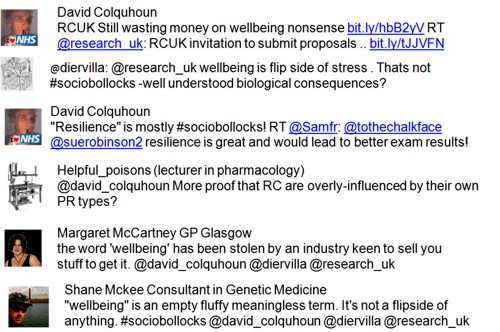
Questionnaires
Not long after the talk, a relevant piece appeared in Times Higher education, on 15 December. it was by my colleague, Adrain Furnham (professor of psychology at UCL). Doubtless it was brought on by the barrage of emails badgering us to fill in the latest staff survey (I did). Two quotations give the flavour.
Where’s the ticked-off box?
"The staff survey is, of course, the province of the most hated, loathed and despised department in the university – human resources. The survey-wallahs go to great pains to get a good response rate. They appoint, recruit and bamboozle people into becoming survey “champions”, whose job is to get people to complete the damn thing. Nothing peeves, irks and frustrates the survey people more than a poor response rate. "
"Who sees the results? It is customary for a “client” and respondents to receive a report giving the headline results. But do these reports ever show the really bad news? Namely, the news that 87 per cent of people neither like nor respect nor trust their manager, that 74 per cent are very strongly not proud to work for the organisation, and that a staggering 94 per cent think the appraisal/performance management system is a pointless, time-wasting, bureaucratic exercise?".
Watch Barbara Ehrenreich on the positive thinking industry. She’s very good on the suggestion that positive thinking influences your fate through your immune system, It doesn’t. That’s the favourite mantra of every quack and snake oil salesman.
The YouGov poll on Happiness and Wellbeing
The YouGov poll starts with the usual unanswerable questions.
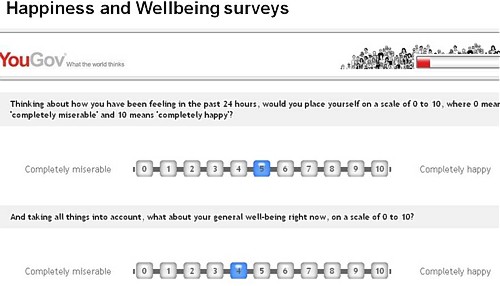
I still maintain that every day is a mixture of good and bad things. Any answer I give to questions like this is pure guesswork. At least you get to tell them what you think. The fact that on average people mark it around 7 is perhaps more a sign of guesswork than useful information.

I said that I disagree most with "A wellbeing index could accurately reflect the real standard of loving of the nation", but that’s the only strong statement that was allowed: The other 6 are all either wimpy or they endorse the silliness.
UCL’s staff survey
Recently UCL got its own customer satisfaction survey. Despite repeated reminders, fewer than half the staff bothered to complete it (the day before it closed, only 28% of the Division of Biosciences had done so). I can understand why.

Just like the last time. many of the questions were infuriating, because no answer seemed satisfactory without adding qualifications, and you couldn’t do that, There was a single free text box at the end. And, guess what, what people write in it will be kept secret.
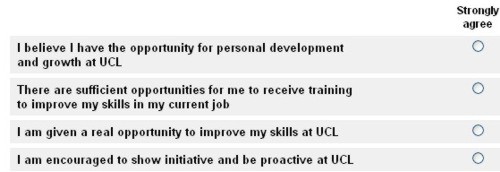
This is a very odd question to ask academics. The only course in my area is the one that I and colleagues run, unpaid and with no support from UCL. HR have done nothing that helps my understanding of stochastic processes (though academic colleagues have done a great deal). A comment, below, hits the nail on the head.
“Agree? Great, staff development are doing a good job! Disagree? Clearly you need … more staff development courses!”
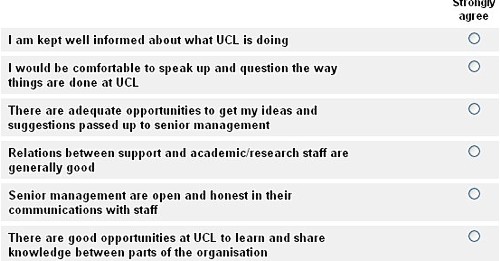
Well informed? Yes there are endless newsletters, though they increasingly read like PR rather than information.
Most people are terrified to stand up at a meeting of academic board or to vote against the senior management committee decisions (no secret votes there -you have to put up your hand). The same is true of Faculty Boards, though they have become rare. Perhaps that is why so few people go to them any longer. It will be interesting to see how this question is answered (if it is ever released).
Anyone can pass their ideas to senior management. I have done so quite often. I can’t, off-hand, think of any case where my suggestions have been acted on. I expect that is why most people don’t bother.
The question about relations between support staff and academics is equally unanswerable without qualifications. In my experience relationships have always been very good with lower rank people with whom you work and meet regularly. It is often not so good with senior adminisrators, too many of whom treat academics as a nuisance that gets in the way of their ambitions. Recent changes have probably made relations worse, because the centralisation of support staff means that you rarely know any of them personally. But there is no space on the questionnaire to say any of this.
It’s hard to answer question 5 too. There is a general perception that the main object of communication is to tell you what to do. Much of it is too vacuous to have any detectable meaning. A large amount of it is, i suspect, never read.
Question 6. The abolition of local tea rooms has reduced the ability to learn and share knoowledge. The one place we have is the Housman room. It is beyond belief that there was recently an attempt to abolish it. I gather that that threat has receded but it wasted a great deal of time to organise petitions. We are deluged with newsletters from one ‘domain’ or another, and though they have some useful information, they do not begin to compensate for face to face meetings which are now less frequent than formerly. As I wrote elsewhere, failing to waste time drinking coffee can seriously harm you career. The survey questions allow none of these things to be said.
Finally we come to ‘Overall perceptions’.
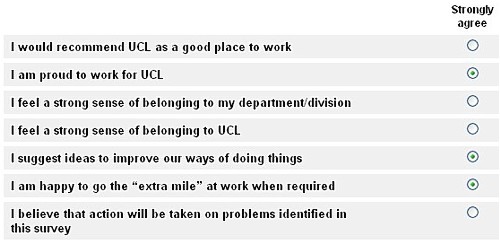
These are the hardest of all.
Yes, I’d recommend UCL as a good place to work, certainly better than Imperial. On the other hand it’s not as good as it was. One now meets colleagues less than at any time in the past. When you enter what used to be my department, you are greeted with a sea of locked doors. No office, no pigeon holes. no tea room. At times it feels as though you might as well be working on an assembly line in a car factory.
Am i proud to work for UCL?. Yes, very, at one level. It’s my sort of place. I couldn’t stand the flummery of Oxbridge, and godless heritage of UCL is perfect for me. But am I proud of some of the recent changes? No, I am not. There is, of course, no chance to explain these subtleties.
Question 3 is easy. Which department? My department was abolished, despite being the oldest in England, and consistently getting top ratings. Its morale used to make a wonderful working environment. .It’s hard to generate much sense of belonging to a huge grouping with a catchy name like NPP (that’s neuroscience. physiology and pharmacology), most of whose members you have never met. The separation of teaching from research has also reduced any sense of cohesiveness.
As for the last question, you must be joking.
Wellbeing and resilience at work
That’s the title of a web page from UCL’s occupational health people.
"Wellbeing is not just about being happy; it is also about having the resilience to deal effectively with change and unpredictability. We can all develop skills to help us when things are not going as well as we hope or expect."
When you click on the questionnaire you are taken to the absurdly long (195 questions) Robertson-Cooper resilience questionnaire, about which I already wrote a bit. You’d need a lot of resilience to finish it and would probably learn very little.
You are directed then to "useful tools" for improving your wellbeing and resilience. These too are outsourced, to the International Stress Management Association.

Let’s look at their valuable advice.
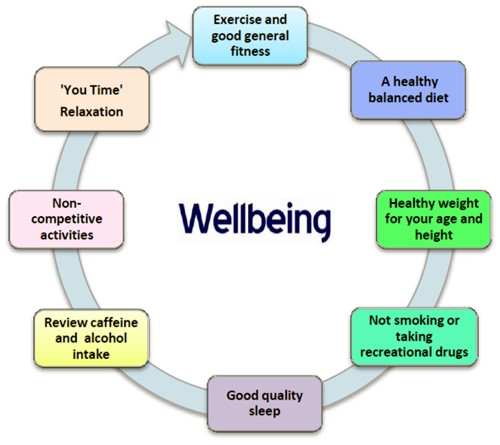
|
This is the sort of advice that’s thrust down your throat at every turn. It’s puerile and condescending to present us with diagram like that. I love the way that coffee is categorised with alcohol. That’s nothing short of pure quackery. The sort of thing you might have expected from a graduate in "nutrtitional therapy" (before Westminster closed it down). |

|
The resilience diagram is equally peurile.
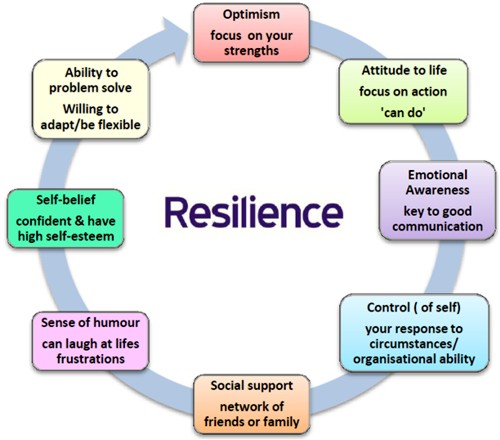
It’s hard to escape being lectured about wellbeing. It’s turned into a major soure of bullying and harassment. The best thing that could be done for my wellbeing is for the self-styled experts to get a proper job.
The UCL Grand Challenge in Human Wellbeing
This rather grand sounding project is one of the five Grand Challenges. They are, I think, well-meaning (though the more cynical views that I hear suggest that they are designed to get money from Bill Gates’ Foundation).
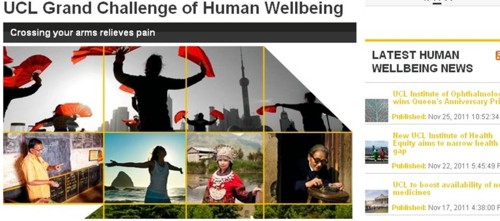
Quite a lot of money has been spent on them. So one must ask whether they have resulted in any work being done that would not have been done without paying a large salary to a "Director of Grand Challenges". Have they produced enough to compensate for the embarrassment engendered by the pretentious-sounding name?
The list of projects is interesting. Some are worthy enough, but would probably have happened anyway. None are particularly interdisciplinary, despite that being one of the alleged advantages. More to the point though, some of them seem to have little chance of contributing to anyone’s happiness.
One good one is run by Michael Marmot.

This is the sort of thing that Marmot is very good at. It doesn’t need a “Grand Challenge”. Marmot talked about it at the Café Scientifique on 5 Jan 2012. It was a really good talk. Of course it isn’t likely that it will actually achieve much, not least with Andrew Lansley as Health Secretary, but I wish them well. It’s very good that they are trying.
The Wellbeing intervention study.
This study will measure subjective wellbeing and salivary cortisol after two sorts of writing exercise. it will be randomised, but not blind. So, if there is any effect at all, it will have a better chance of establishing causality than most of the "trials" that HEFCE is paying Robertson-Cooper to do. What is much less obvious is how the results could be used, even in the unlikely event that one writing exercise made people happier or less-stressed than the other.
The body scanner project: wellbeing UCL.org
Although wellbeingUCL.org sounds like a UCL thing, the domain is registered at the home address of the UCL person who invented a 3D body scanner.
|
So far this interesting gadget has been used by the clothing industry. Now it is being offered to UCL people, as "a ‘proof-of-concept’ for national Wellbeing surveys”. Its certainly heavily sponsored. Before going into the scanner you are invited to do yet another questionnaire. The questions strike me as a bit odd, There are endless web sites that offer to manage wellbeing, Why Boots? Well they do happen to be a sponsor. I;m not sure that that’s a good idea, Boots are notorious for selling fraudulent "wellbeing" products such as "detox" nonsense and vitamin pills. |
 |
Boots are constantly being reprimanded by the Advertising Standards Authority, most recently over their advertising of homeopathic pills
.Here is a sample from the questionnaire.

And as for the idea that most academics can afford, or would want, a personal trainer. Word fail me.
The scanner is an interesting machine, but even its promoters don’t seem to have much idea what it could do for your wellbeing.
The museum object therapy study.
This is based on the somewhat unlikely premise that holding a museum object will make you feel better.
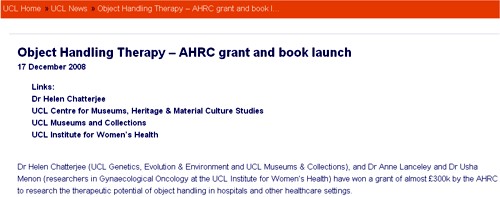
The AHRC gave a grant of £300,000 to test the idea. There were controls (in the form of photographs of the objects rather than the objects themselves), But as the authors themselves recognise, the design of the study did not allow any firm conclusions to be drawn. It’s really rather like the endless indecisive pilot studies that litter the world of alternative medicine. They usually show promising results, but the promise somehow never get confirmed if the study is done properly. But what really baffles me is what use it would be even if the results were positive? Would we see hospital wards overrun with museum people thrusting ancient objects into the hands of sick patients? If so, make mine a machete.
I can’t believe this is a good way to spend £300,000.
Conclusion
Wellbeing sounds good, but a lot of money is being spent on things that won’t improve it.
If you universities really wanted to improve wellbeing they would listen to Michael Marmot, and stop disempowering their employees.
Since writing about anti-scientific degrees in Nature (March 2007), much has been revealed about the nonsense that is taught on these degrees. New Year’s day seems like a good time to assess how far we’ve got, five years on.
At the beginning of 2007 UCAS (the universities central admission service) offered 45 different BSc degrees in quackery, at 16 universities.
Now there are only 24 such degrees.
If you exclude chiropractic and osteopathy, which all run at private colleges, with some sort of "validation" from a university, there are now only 18 BSc/MSc courses being offered in eight universities.
Degrees in homeopathy, naturopathy and "nutritional therapy", reflexology and aromatherapy have vanished altogether from UCAS.
In the race to provide BScs in anti-science, Middlesex University has now overhauled the long-standing leader, Westminster, by a short head.
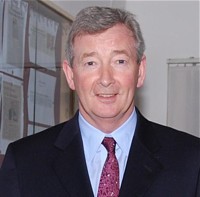 Michael Driscoll, vice-chancellor of Middlesex |
|
Let’s see what’s gone.
The University of Central Lancashire (UCLAN) was the first to see sense. In August 2008 they announced closure of their “BSc” degree in homeopathy. On September 2008 they announced an internal review of their courses in homeopathy. herbalism and acupuncture. The report of this review closed down all of them in July 2009. I first asked for their teaching materials in July 2006. I finally got them in December 2010, after winning an appeal to the Information Commissioner, and then winning an appeal against that decision at an Information tribunal . By the time I got them, the course had been closed for over two years. That is just as well, because it turned out that UCLAN’s students were being taught dangerous nonsense. No wonder they tried so hard to conceal it.
Salford University was the next to go. They shut down their courses in complementary medicine, homeopathy and acupuncture. In January 2009 they announced " they are no longer considered “a sound academic fit” ". Shortly afterwards. a letter appeared in The Times from three heavyweights (plus me) congratulating the vice-chancellor on his decision.
University of Westminster
For many years, Westminster was the biggest supplier of BSc degrees in quackery. At the beginning of 2007 they offered 14 different BSc degrees in homeopathy, naturopathy, nutritional therapy, "complementary therapies", (western) herbal medicine and traditional Chinese medicine with acupuncture. Some of their courses were so bizarre that some of the students and even staff sent me slides which taught things like "amethysts emit high Yin energy". Like UCLAN, Westminster also held an internal review. Unlike UCLAN it came to the absurd conclusion that all would be well if they injected more science into the courses. The incompetence of the review meant that those who wrote it hadn’t noticed that if you try to put science into homeopathy or naturopathy, the whole subject vanishes in a puff of smoke. Nevertheless Westminster closed down entry to BSc homeopathy in March 2009 (though the subject remained as part of other courses).
Three years after the Nature article, all five BSc homeopathy degrees had shut their doors.
During 2011, Westminster shut down Naturopathy, Nutritional therapy, Therapeutic bodywork and Complementary Medicine. See, for example,
More dangerous nonsense from the University of Westminster: when will Professor Geoffrey Petts do something about it?
Now Westminster has only four courses in two subjects. They still teach some dangerous and untrue things, but I suspect the writing is on the wall for these too.
I have seen a document, dated 11 April 2011, which states
“The following courses have been identified as ‘at risk’ (School definition) and will be discussed at the APRG and University Review Group2, due to poor recruitment and high cost of delivery:
Integrated Health Scheme: BSc Complementary Medicine, Naturopathy; BSc Chinese Medicine; BSc Nutritional Therapy; BSc Herbal Medicine”
All but Chinese medicine and Herbal medicine have already gone. Almost there.
University of Wales
Since my first post in 2008 about the validation scam operated by the University of Wales, and some good investigations by BBC Wales TV, the outcome was the most spectacular so far. The entire institution collapsed. They no longer "validate" external degrees at dodgy business colleges, loony religious colleges or magic medicine colleges.
Another worthless validation: the University of Wales and nutritional therapy (October 2008) This is a ‘degree’ in nutrtional therapy. It is even more hilarious than usual, but it passed the validation anyway.
Scandal of the University of Wales and the Quality Assurance Agency (November 2010). This post followed the BBC Wales TV programme. At last the QAA began to notice, yet further confirmation of its utter ineptitude.
The University of Wales disgraced (but its vice chancellor is promoted) (October, 2011) The eventual collapse of the university was well-deserved. But it is very weird that the people who were responsible for it have still got their jobs. In fact the vice-chancellor, Marc Clement, was promoted despite his mendacious claim to be unaware of what was going on.
It remains to be seen how many of the many quack courses that were validated by the University of Wales will be taken on by other universities. The McTimoney College of Chiropractic is owned by BPP University (so much for their quality control, as explained in Private Eye). but still claims to be validated by Wales until 2017.
Some of the more minor players
Edinburgh Napier University. After an FOI request (rejected), Napier closed their herbal medicine degree in 2010.
Hot and cold herbal nonsense from Napier University Edinburgh: another course shuts. (June 2010)
As expected, the Scottish Information Commissioner agreed with that for England and Wales and ordered material to be sent. Edinburgh Napier University teaches reflexology, aromatherapy and therapeutic touch. Scottish Information Commissioner says you should know. Some of the horrors so discovered appeared in Yet more dangerous nonsense inflicted on students by Edinburgh Napier University. The embarrassment seems to have worked. Their remaining degrees in aromatherapy and reflexology have now vanished from UCAS too. All that remains is a couple of part time “Certificates of Credit” for aromatherapy and reflexology
Anglia Ruskin Univerity Not only have BSc degrees gone in aromatherapy and reflexology, but their midwifery degree now states "We are unable to accept qualifications in aromatherapy, massage and reflexology."
University of Derby Reflexology and aromatherapy have gone, though doubtless Spa management therapies have much nonsense left
University of Greenwich. BSc in Complementary Therapies (Nutritional Health) and BSc in Complementary Therapies (Nutritional Health) have been shut. The BSc Acupuncture is listed on their web site but it is under review, and is not listed in UCAS for 2012. (Acupuncture is run at International College of Oriental medicine, validated by Greenwich.). Only osteopathy (MOst) is still running, and that is a validation of an external course run at The European School of Osteopathy, in Maidstone
Thames Valley University was renamed the University of West London in 2010. The nonsense that was run there (e.g. Nutritional Fairy Tales from Thames Valley University) seems to have vanished. Their previous alt med guru, Nicola Robinson, appears now to be at London South Bank University (ranked 116 out of the 116 UK universities)
What’s left?
Chiropractic Surprisingly, given the total discreditation of chiropractic in the wake of the Simon Singh affair, and the internecine warfare that followed it, none of the chiropractic courses have shut yet. Some are clearly in trouble, so watch this space.
Osteopathy has also had no course closures since 2007. Like chiropractic it also suffers from internecine warfare. The General Osteopathic Council refuses to disown the utter nonsense of "craniosacral" osteopathy. But the more sensible practitioners do so and are roughly as effective as physiotherapists (though there are real doubts about how effective that is).
Excluding chiropractic and osteopathy, this is all that’s left. It now consists almost entirely of Chinese medicine and a bit of herbal.
Glyndwr university (Known as North East Wales Institute until 2008) Ranked 104 out of 116 UK universities
BSc Acupuncture (B341) BSc
BSc Complementary Therapies for Healthcare (B343)
Cardiff Metropolitan University (UWIC) (Known as University of Wales Institute Cardiff (UWIC) until Nov 2011.) The vice-chancellor of Cardiff Metropolitan, Antony Chapman, is in the QAA’s board of directors, so perhaps it isn’t surprising that the QAA has done nothing.
BSc Complementary Therapies (3 years) (B390)
BSc Complementary Therapies (4 yrs inc Foundation) (B300)
University of Lincoln
Acupuncture (B343) 3FT Hon BSc
Herbal Medicine (B342) 3FT Hon BSc
University of East London Ranked 113 out of 116 UK universities
Acupuncture (B343) 3FT Hon BSc
London South Bank University Ranked 116 out of 116 UK universities
Acupuncture (B343) 4FT Deg MCM
The Manchester Metropolitan University Ranked 93 out of 116 UK universities
Acupuncture (B343) 3FT Hon BSc
Middlesex University
Acupuncture (B348) 3FT Hon BSc
Ayurvedic Medicine (A900) 4FT Oth MCM
Herbal Medicine (B347) 3FT Hon BSc
Traditional Chinese Medicine (BT31) 4FT Hon BSc
University of Westminster
Chinese Medicine: Acupuncture (B343) 3FT Hon BSc
Chinese Medicine: Acupuncture with Foundation (B341) 4FT/5FT Hon BSc/MSci
Herbal Medicine (B342) 3FT Hon BSc
Herbal Medicine with Foundation Year (B340) 4FT/5FT Hon BSc/MSci
It seems that acupuncture hangs on in universities that are right at the bottom of the rankings.
Manchester Metropolitan gets the booby prize for actually starting a new course, just as all around are closing theirs. Dr Peter Banister, who was on the committee that approved the course (but now retired), has told me ” I am sceptical in the current economic climate whether it will prove to be successful”. Let’s hope he’s right.
But well done Westminster. Your position as the leader in antiscientific degrees has now been claimed by Middlesex University. Their "degrees" in Ayurveda mark out Middlesex University as the new King of Woo.
Over to you, Professor Driscoll. As vice-chancellor of Middlesex University, the buck stops with you.
Both still teach Chinese and herbal medicine, which are potentially dangerous. There is not a single product from either that has marketing authorisation from the MHRA, though the MHRA has betrayed its trust by allowing misleading labelling of herbal medicines without requiring any evidence whatsoever that they work, see, for example
Why degrees in Chinese medicine are a danger to patients
More quackedemia. Dangerous Chinese medicine taught at Middlesex University
Why does the MHRA refuse to label herbal products honestly? Kent Woods and Richard Woodfield tell me
Sub-degree courses
In contrast to the large reduction in the number of BSc and MSc degrees, there has actually been an increase in two year foundation degrees and HND courses in complementary medicine, at places right near the bottom of the academic heap. The subject is sinking to the bottom. With luck it will vanish entirely from universities before too long.
Research-intensive Universities
Although all of the degrees in magic medicine are from post-1992 universities, the subject has crept into more prestigious universities. Of these, the University of Southampton is perhaps the worst, because of the presence of George Lewith, and his defender, Stephen Holgate. Others have staunch defenders of quackery, including the University of Warwick, University of Edinburgh and St Batholomew’s.
Why have all these courses closed?
One reason is certainly the embarrassment caused by exposure of what’s taught on the courses. Professors Petts (Westminster) and Driscoll (Middlesex) must be aware that googling their names produces references to this and other skeptical blogs on the front page. Thanks to some plain brown emails, and, after a three year battle, the Freedom of Information Act, it has been possible to show here the nonsense that has been foisted on students by some universities. Not only is this a burden on the taxpayer, but, more importantly, some of it is a danger to patients.
When a course closes, it is often said that it is because of falling student numbers (though UCLAN and Salford did not use that excuse). Insofar as that is true, the credit must go to the whole of the skeptical movement that has grown so remarkably in the last few years. Ben Goldacre’s "ragged band of bloggers" have produced a real change in universities and in society as a whole.
The people who should have done the job have either been passive or an active hindrance. The list is long. Vice-chancellors and Universities UK (UUK), the Quality Assurance Agency (QAA), the Hiigher Education Funding Council England (HEFCE), Skills for Health, the Medicines and Health Regulatory Authority ( MHRA) , the Health Professions Council (HPC), the Department of Health, the Prince of Wales and his reincarnated propaganda organisation, the "College of Medicine", the King’s Fund, the Universities and Colleges Union (UCU), OfQual, Edexcel, National Occupational Standards and Qualifications and the Curriculum Authority (QCA).
Whatever happened to that "bonfire of the quangos"?
Follow-up
2 January 2012 The McTimoney College of Chiropractic (owned by BPP University) claims that its “validation” by the University of Wales will continue until 2017. This contradicts the statement from UoW. Watch this space.
3 January 2012. Thanks to Neil O’Connell for drawing my attention to a paper in Pain. The paper is particularly interesting because it comes from the Southampton group which has previously been sympathetic to acupuncture. Its authors include George Lewith. It shows, yet again that there is no detectable difference between real and sham acupuncture treatment. It also shows that the empathy of the practitioner has little effect: in fact the stern authoritarian practitioner may have been more effective.
Patients receiving acupuncture demonstrated clinically important improvements from baseline (i.e., a 29.5% reduction in pain), but despite this, acupuncture has no specific efficacy over placebo for this group of patients. The clinical effect of acupuncture treatment and associated controls is not related to the use of an acupuncture needle, nor mediated by empathy, but is practitioner related and may be linked to the perceived authority of the practitioner.”
Sadly. the trial didn’t include a no-treatment group, so it is impossible to say how much of the improvement is regression to the mean and how much is a placebo effect. The authors admit that it could be mostly the former.
Surely now the misplaced confidence in acupuncture shown by some medical and university people must be in tatters.
In yet another sign that even acupuncture advovates are beginning to notice that it doesn’t work, a recent article Paradoxes in Acupuncture Research: Strategies for Moving Forward, shows some fascinating squirming.
3 January 2012. The Daily Telegraph has carried a piece about closure of university courses, written by Michael Hanlon. On 31 January they carried a much longer piece.
3 January 2012. It is a great pity that some physiotherapists seem to have fallen hook, line and sinker for the myths of acupuncture. Physiotherapists are, by and large, the respectable face of manipulative therapy. Their evidence base is certainly not all one would wish, but at least they are free of the outrageous mumbo humbo of chiropractors. Well, most of them are, but not the Acupuncture Association of Chartered Physiotherapists (AACP), or, still worse, The Association of Chartered Physiotherapists in Energy Medicine, a group that is truly away with the fairies. These organisations are bringing a very respectable job into disrepute. And the Health Professions Council, which is meant to be their regulator, has, like most regulators, done nothing whatsoever to stop it.
5 January 2012. Times Higher Education gives a history of the demise of the University of Wales, Boom or Bust. It’s a useful timeline, but like so many journalists, it’s unwilling to admit that bloggers were on to the problem long before the BBC, never mind the QAA.
There was also a leader on the same topic, Perils of the export business. It again fails to take the QAA to task for its failures.
Interviews for Deutsche Welle and Middle East Broadcasting Center TV.
17 January 2012 Another question answered. I just learned that the ludicrous course in Nutritional Therapy, previously validated by the University of Wales (and a contributor to its downfall), is now being validated by, yes, you guessed, Middlesex University. Professor Driscoll seems determined to lead his univerity to the bottom of the academic heap. His new partnership with the Northern college of Acupuncture is just one of a long list of validations that almost rivals that of the late University of Wales. The course has, of course, an enthusiastic testimonial, from a student. It starts
I work full time as a team leader for a pension company but I am also a kinesiologist and work in my spare time doing kinesiology, reiki and Indian head massage.
Evidently she’s a believer in the barmiest and totally disproved forms of magic medicine. And Middlesex University will give her a Master of Science degree. I have to say I find it worrying that she’s a team leader for a pension company. Does she also believe in the value of worthless derivatives. I wonder?
18 January 2012. the story has gone international, with an interview that I did for Deutsche Welle, UK universities drop alternative medicine degree programs. I’m quoted as saying “They’re dishonest, they teach things that aren’t true, and things that are dangerous to patients in some cases”. That seems fair enough.
There is also an interesting item from July 2010 about pressure to drop payment for homeopathy by German health insurance
31 January 2012
The Daily Telegraph carried a prominent 1200 word account (the title wasn’t mine). The published version was edited slightly.
Open access is in the news again.
Index on Censorship held a debate on open data on December 6th.
|
The video of of the meeting is now on YouTube. A couple of dramatic moments in the video: At 48 min O’Neill & Monbiot face off about "competent persons" (and at 58 min Walport makes fun of my contention that it’s better to have more small grants rather than few big ones, on the grounds that it’s impossible to select the stars). |

|
The meeting has been written up on the Bishop Hill Blog, with some very fine cartoon minutes.
 (I love the Josh cartoons -pity he seems to be a climate denier, spoken of approvingly by the unspeakable James Delingpole.)
(I love the Josh cartoons -pity he seems to be a climate denier, spoken of approvingly by the unspeakable James Delingpole.)
It was gratifying that my remarks seemed to be better received by the scientists in the audience than they were by some other panel members. The Bishop Hill blog comments "As David Colquhoun, the only real scientist there and brilliant throughout, said “Give them everything!” " Here’s a subsection of the brilliant cartoon minutes
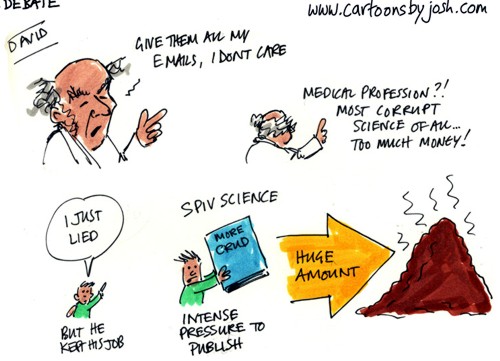
The bit about "I just lied -but he kept his job" referred to the notorious case of Richard Eastell and the University of Sheffield.
We all agreed that papers should be open for anyone to read, free. Monbiot and I both thought that raw data should be available on request, though O’Neill and Walport had a few reservations about that.
A great deal of time and money would be saved if data were provided on request. It shouldn’t need a Freedom of Information Act (FOIA) request, and the time and energy spent on refusing FOIA requests is silly. It simply gives the impression that there is something to hide (Climate scientists must be ruthlessly honest about data). The University of Central Lancashire spent £80,000 of taxpayers’ money trying (unsuccessfully) to appeal against the judgment of the Information Commissioner that they must release course material to me. It’s hard to think of a worse way to spend money.
A few days ago, the Department for Business, Innovation and Skills (BIS) published a report which says (para 6.6)
“The Government . . . is committed to ensuring that publicly-funded research should be accessible
free of charge.”
That’s good, but how it can be achieved is less obvious. Scientific publishing is, at the moment, an unholy mess. It’s a playground for profiteers. It runs on the unpaid labour of academics, who work to generate large profits for publishers. That’s often been said before, recently by both George Monbiot (Academic publishers make Murdoch look like a socialist) and by me (Publish-or-perish: Peer review and the corruption of science). Here are a few details.
Extortionate cost of publishing
Mark Walport has told me that
The Wellcome Trust is currently spending around £3m pa on OA publishing costs and, looking at the Wellcome papers that find their way to UKPMC, we see that around 50% of this content is routed via the “hybrid option”; 40% via the “pure” OA journals (e.g. PLoS, BMC etc), and the remaining 10% through researchers self-archiving their author manuscripts.
I’ve found some interesting numbers, with help from librarians, and through access to The Journal Usage Statistics Portal (JUSP).
Elsevier
UCL pays Elsevier the astonishing sum of €1.25 million, for access to its journals. And that’s just one university. That price doesn’t include any print editions at all, just web access and there is no open access. You have to have a UCL password to see the results. Elsevier has, of course, been criticised before, and not just for its prices.
Elsevier publish around 2700 scientific journals. UCL has bought a package of around 2100 journals. There is no possibility to pick the journals that you want. Some of the journals are used heavily ("use" means access of full text on the web). In 2010, the most heavily used journal was The Lancet, followed by four Cell Press journals
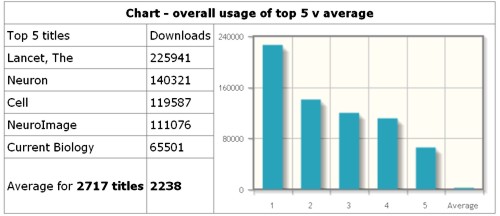
But notice the last bin. Most of the journals are hardly used at all. Among all Elsevier journals, 251 were not accessed even once in 2010. Among the 2068 journals bought by UCL, 56 were never accessed in 2010 and the most frequent number of accesses per year is between 1 and 10 (the second bin in the histogram, below). 60 percent of journals have 300 or fewer usages in 2010, Above 300, the histogram tails on up to 51878 accesses for The Lancet. The remaining 40 percent of journals are represented by the last bin (in red). The distribution is exceedingly skewed. The median is 187, i.e. half of the journals had fewer than 187 usages in 2010), but the mean number of usages (which is misleading for such a skewed distribution, was 662 usages).

Nature Publishing Group
UCL bought 65 journals from NPG in 2010. They get more use than Elsevier, though surprisingly three of them were never accessed in 2010, and 17 had fewer than 1000 accesses in that year. The median usage was 2412, better than most. The leader, needless to say, was Nature itself, with 153,321.
Oxford University Press
The situation is even more extreme for 248 OUP journals, perhaps because many of the journals are arts or law rather than science.
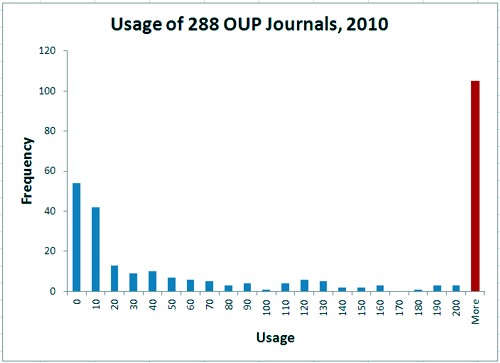
The most frequent (modal) usage of was zero (54 journals), followed by 1 to 10 accesses (42 journals) 64 percent of journals had fewer than 200 usages, and the 36 percent with over 200 are pooled in the last (red) bin. The histogram extends right up to 16060 accesses for Brain. The median number of usages in 2010 was 66.
So far I haven’t been able to discover the costs of the contracts with OUP or Nature Publishing group. It seems that the university has agreed to confidentiality clauses. This itself is a shocking lack of transparency. If I can find the numbers I shall -watch this space.
Almost all of these journals are not open access. The academics do the experiments, most often paid for by the taxpayer. They write the paper (and now it has to be in a form that is almost ready for publication without further work), they send it to the journal, where it is sent for peer review, which is also unpaid. The journal sells the product back to the universities for a high price, where the results of the work are hidden from the people who paid for it.
It’s even worse than that, because often the people who did the work and wrote the paper, have to pay "page charges". These vary, but can be quite high. If you send a paper to the Journal of Neuroscience, it will probably cost you about $1000. Other journals, like the excellent Journal of Physiology, don’t charge you to submit a paper (unless you want a colour figure in the print edition, £200), but the paper is hidden from the public for 12 months unless you pay $3000.
The major medical charity, the Wellcome Trust, requires that the work it funds should be available to the public within 6 months of publication. That’s nothing like good enough to allow the public to judge the claims of a paper which hits the newspapers the day that it’s published. Nevertheless it can cost the authors a lot. Elsevier journals charge $3000 except for their most-used journals. The Lancet charges £400 per page and Cell Press journals charge $5000 for this unsatisfactory form of open access.
Open access journals
The outcry about hidden results has resulted in a new generation of truly open access journals that are open to everyone from day one. But if you want to publish in them you have to pay quite a lot.
Furthermore, although all these journals are free to read, most of them do not allow free use of the material they publish. Most are operating under all-rights-reserved copyrights. In 2009 under 10 percent of open access journals had true Creative Commons licence.
Nature Publishing Group has a true open access journal, Nature Communications, but it costs the author $5000 to publish there. The Public Library of Science journals are truly open access but the author is charged $2900 for PLoS Medicine though PLoS One costs the author only $1350
A 2011 report considered the transition to open access publishing but it doesn’t even consider radical solutions, and makes unreasonably low estimates of the costs of open access publishing.
Scam journals have flourished under the open access flag
Open access publishing has, so far, almost always involved paying a hefty fee. That has brought the rats out of the woodwork and one gets bombarded daily with offers to publish in yet another open access journal. Many of these are simply scams. You pay, we put it on the web and we won’t fuss about quality. Luckily there is now a guide to these crooks: Jeffrey Beall’s List of Predatory, Open-Access Publishers.
One that I hear from regularly is Bentham Open Journals
(a name that is particularly inappropriate for anyone at UCL). Jeffery Beall comments
"Among the first, large-scale gold OA publishers, Bentham Open continues to expand its fleet of journals, now numbering over 230. Bentham essentially operates as a scholarly vanity press."
They undercut real journals. A research article in The Open Neuroscience Journal will cost you a mere $800. Although these journals claim to be peer-reviewed, their standards are suspect. In 2009, a nonsensical computer-generated spoof paper was accepted by a Bentham Journal (for $800),
What can be done about publication, and what can be done about grants?
Both grants and publications are peer-reviewed, but the problems need to be discussed separately.
Peer review of papers by journals
One option is clearly to follow the example of the best open access journals, such as PLoS. The cost of $3000 to 5000 per paper would have to be paid by the research funder, often the taxpayer. It would be money subtracted from the research budget, but it would retain the present peer review system and should cost no more if the money that were saved on extortionate journal subscriptions were transferred to research budgets to pay the bills, though there is little chance of this happening.
The cost of publication would, in any case, be minimised if fewer papers were published, which is highly desirable anyway.
But there are real problems with the present peer review system. It works quite well for journals that are high in the hierarchy. I have few grumbles myself about the quality of reviews, and sometimes I’ve benefitted a lot from good suggestions made by reviewers. But for the user, the process is much less satisfactory because peer review has next to no effect on what gets published in journals. All it influences is which journal the paper appears in. The only effect of the vast amount of unpaid time and effort put into reviewing is to maintain a hierarchy of journals, It has next to no effect on what appears in Pubmed.
For authors, peer review can work quite well, but
from the point of view of the consumer, peer review is useless.
It is a myth that peer review ensures the quality of what appears in the literature.
A more radical approach
I made some more radical suggestions in Publish-or-perish: Peer review and the corruption of science.
It seems to me that there would be many advantages if people simply published their own work on the web, and then opened the comments. For a start, it would cost next to nothing. The huge amount of money that goes to publishers could be put to better uses.
Another advantage would be that negative results could be published. And proper full descriptions of methods could be provided because there would be no restrictions on length.
Under that system, I would certainly send a draft paper to a few people I respected for comments before publishing it. Informal consortia might form for that purpose.
The publication bias that results from non-publication of negative results is a serious problem, mainly, but not exclusively, for clinical trials. It is mandatory to register a clinical trial before it starts, but many of the results never appear. (see, for example, Deborah Cohen’s report for Index on Censorship). Although trials now have to be registered before they start, there is no check on whether or not the results are published. A large number of registered trials do not result in any publication, and this publication bias can costs thousands of lives. It is really important to ensure that all results get published,
The ArXiv model
There are many problems that would have to be solved before we could move to self-publication on the web. Some have already been solved by physicists and mathematicians. Their archive, ArXiv.org provides an example of where we should be heading. Papers are published on the web at no cost to either user or reader, and comments can be left. It is an excellent example of post-publication peer review. Flame wars are minimised by requiring users to register, and to show they are bona fide scientists before they can upload papers or comments. You may need endorsement if you haven’t submitted before.
Peer review of grants
The problems for grants are quite different from those for papers. There is no possibility of doing away with peer review for the award of grants, however imperfect the process may be. In fact candidates for the new Wellcome Trust investigator awards were alarmed to find that the short listing of candidates for their new Investigator Awards was done without peer review.
The Wellcome Trust has been enormously important for the support of medical and biological support, and never more than now, when the MRC has become rather chaotic (let’s hope the new CEO can sort it out). There was, therefore, real consternation when Wellcome announced a while ago its intention to stop giving project and programme grants altogether. Instead it would give a few Wellcome Trust Investigator Awards to prominent people. That sounds like the Howard Hughes approach, and runs a big risk of “to them that hath shall be given”.
The awards have just been announced, and there is a good account by Colin Macilwain in Science [pdf]. UCL did reasonable well with four awards, but four is not many for a place the size of UCL. Colin Macilwain hits the nail on the head.
"While this is great news for the 27 new Wellcome Investigators who will share £57 million, hundreds of university-based researchers stand to lose Wellcome funds as the trust phases out some existing programs to pay for the new category of investigators".
There were 750 applications, but on the basis of CV alone, they were pared down to a long-list if 173. The panels then cut this down to a short-list of 55. Up to this point no external referees were used, quite unlike the normal process for award of grants. This seems to me to have been an enormous mistake. No panel, however distinguished, can have the knowledge to distinguish the good from the bad in areas outside their own work, It is only human nature to favour the sort of work you do yourself. The 55 shortlisted people were interviewed, but again by a panel with an even narrower range of expertise, Macilwain again:
"Applications for MRC grants have gone up “markedly” since the Wellcome ones closed, he says: “We still see that as unresolved.” Leszek Borysiewicz, vice-chancellor of the University of Cambridge, which won four awards, believes the impact will be positive: “Universities will adapt to this way of funding research."
It certainly isn’t obvious to most people how Cambridge or UCL will "adapt" to funding of only four people.
The Cancer Research Campaign UK has recently made the same mistake.
One problem is that any scheme of this sort will inevitably favour big groups, most of whom are well-funded already. Since there is some reason to believe that small groups are more productive (see also University Alliance report), it isn’t obvious that this is a good way to go. I was lucky enough to get 45 minutes with the director of the Wellcome Trust, Mark Walport, to put these views. He didn’t agree with all I said, but he did listen.
One of the things that I put to him was a small statistical calculation to illustrate the great danger of a plan that funds very few people. The funding rate was 3.6% of the original applications, and 15.6% of the long-listed applications. Let’s suppose, as a rough approximation, that the 173 long-listed applications were all of roughly equal merit. No doubt that won’t be exactly true, but I suspect it might be more nearly true than the expert panels will admit. A quick calculation in Mathcad gives this, if we assume a 1 in 8 chance of success for each application.
Distribution of the number of successful applications
Suppose $ n $ grant applications are submitted. For example, the same grant submitted $ n $ times to selection boards of equal quality, OR $ n $ different grants of equal merit are submitted to the same board.
Define $ p $ = probability of success at each application
Under these assumptions, it is a simple binomial distribution problem.
According to the binomial distribution, the probability of getting $ r $ successful applications in $ n $ attempts is
\[ P(r)=\frac{n!}{r!\left(n-r\right)! }\; {p}^{r} \left(1-p \right)^{n-r} \]
For a success rate of 1 in 8, $ p = 0.125 $, so if you make $ n = 8 $ applications, the probability that $ r $ of them will succeed is shown in the graph.
Despite equal merit, almost as many people end up with no grant at all as almost as many people end up with no grant at all as get one grant. And 26% of people will get two or more grants.
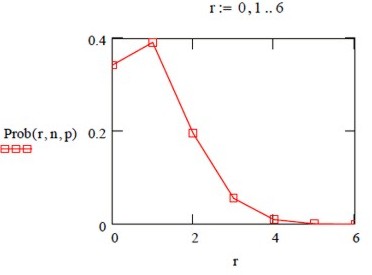
Of course it would take an entire year to write 8 applications. If we take a more realistic case of making four applications we have $ n = 4 $ (and $ p = 0.125 $, as before). In this case the graph comes out as below. You have a nearly 60% chance of getting nothing at all, and only a 1 in 3 chance of getting one grant.
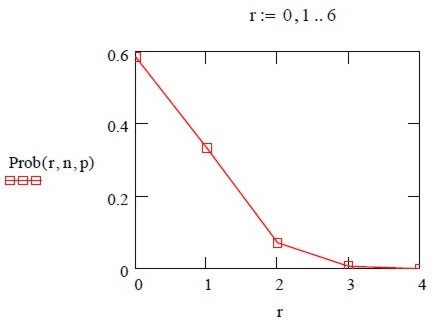
These results arise regardless of merit, purely as consequence of random chance. They are disastrous, and especially disastrous for the smaller, better-value, groups for which a gap in funding can mean loss of vital expertise. It also has the consequence that scientists have to spend most of their time not doing science, but writing grant applications. The mean number of applications before a success is 8, and a third of people will have to write 9 or more applications before they get funding. This makes very little sense.
Grant-awarding panels are faced with the near-impossible task of ranking many similar grants. The peer review system is breaking down, just as it has already broken down for journal publications.
I think these considerations demolish the argument for funding a small number of ‘stars’. The public might expect that the person making the application would take an active part in the research. Too often, now, they spend most of their time writing grant applications. What we need is more responsive-mode smallish programme grants and a maximum on the size of groups.
Conclusions
We should be thinking about the following changes,
- Limit the number of papers that an individual can publish. This would increase quality, it would reduce the impossible load on peer reviewers and it would reduce costs.
- Limit the size of labs so that more small groups are encouraged. This would increase both quality and value for money.
- More (and so smaller) grants are essential for innovation and productivity.
- Move towards self-publishing on the web so the cost of publishing becomes very low rather than the present extortionate costs. It would also mean that negative results could be published easily and that methods could be described in proper detail.
The entire debate is now on YouTube.
Follow-up
24 January 2012. The eminent mathematician, Tim Gowers, has a rather hard-hitting blog on open access and scientific publishing, Elsevier – my part in its downfall. I’m right with him. Although his post lacks the detailed numbers of mine, it shows that mathematicians has exactly the same problems of the rest of us.
11 April 2012. Thanks to Twitter, I came across a remarkably prescient article, in the Guardian, in 2001.
Science world in revolt at power of the journal owners, by James Meek. Elsevier have been getting away with murder for quite a while.
19 April 2012.
|
I got invited to give after-dinner talk on open access at Cumberland Lodge. It was for the retreat of out GEE Department (that is the catchy brand name we’ve had since 2007: I’m in the equally memorable NPP). I think it stands for Genetics, Evolution and Environment. The talk seemed to stiir up a lot of interest: the discussions ran on to the next day. |
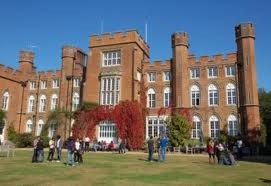
|
It was clear that younger people are still as infatuated with Nature and Science as ever. And that, of course is the fault of their elders.
The only way that I can see, is to abandon impact factor as a way of judging people. It should have gone years ago,and good people have never used it. They read the papers. Access to research will never be free until we think oi a way to break the hegemony of Nature, Science and a handful of others. Stephen Curry has made some suggestions
Probably it will take action from above. The Wellcome Trust has made a good start. And so has Harvard. We should follow their lead (see also, Stephen Curry’s take on Harvard)
And don’t forget to sign up for the Elsevier boycott. Over 10,000 academics have already signed. Tim Gowers’ initiative took off remarkably.
24 July 2012. I’m reminded by Nature writer, Richard van Noorden (@Richvn) that Nature itself has written at least twice about the iniquity of judging people by impact factors. In 2005 Not-so-deep impact said
"Only 50 out of the roughly 1,800 citable items published in those two years received more than 100 citations in 2004. The great majority of our papers received fewer than 20 citations."
"None of this would really matter very much, were it not for the unhealthy reliance on impact factors by administrators and researchers’ employers worldwide to assess the scientific quality of nations and institutions, and often even to judge individuals."
And, more recently, in Assessing assessment” (2010).
27 April 2014
The brilliant mathematician,Tim Gowers, started a real revolt against old-fashioned publishers who are desperately trying to maintain extortionate profits in a world that has changed entirely. In his 2012 post, Elsevier: my part in its downfall, he declared that he would no longer publish in, or act as referee for, any journal published by Elsevier. Please follow his lead and sign an undertaking to that effect: 14,614 people have already signed.
Gowers has now gone further. He’s made substantial progress in penetrating the wall of secrecy with which predatory publishers (of which Elsevier is not the only example) seek to prevent anyone knowing about the profitable racket they are operating. Even the confidentiality agreements, which they force universities to sign, are themselves confidential.
In a new post, Tim Gowers has provided more shocking facts about the prices paid by universities. Please look at Elsevier journals — some facts. The jaw-dropping 2011 sum of €1.25 million paid by UCL alone, is now already well out-of-date. It’s now £1,381,380. He gives figures for many other Russell Group universities too. He also publishes some of the obstructive letters that he got in the process of trying to get hold of the numbers. It’s a wonderful aspect of the web that it’s easy to shame those who deserve to be shamed.
I very much hope the matter is taken to the Information Commissioner, and that a precedent is set that it’s totally unacceptable to keep secret what a university pays for services.
The offering of quack cancer treatments at an exorbitant price is simple cruelty. The nature of the Burzynski clinic has been known for some time. But it has come to a head with some utterly vile threatening letters sent to the admirable Andrew Lewis, because he told a few truths about Stanislaw Burzynski’s despicable outfit. Please read his original post, The False Hope of the Burzynski Clinic.
I have to add by two-pennorth worth to the row that has blown up in the blogosphere at the outrageous behaviour of Burzynski. I hope other bloggers will do the same. There is safety in numbers. We need a Streisand effect to face down these pathetic bullies. It’s the "I am Spartacus" principle.
I won’t repeat all the details. They have spread like wildfire round the web. Briefly, it was sparked off by tragic case of a 4-year old girl, Billie Bainbridge who has a rare form of brain cancer. Well-intentioned pop stars have been trying to raise £200,000 to "enrol her into a clinical trial" at Burzynski clinic in Texas, despite the fact that Dr Stanislaw Burzynski has already been on trial for cancer fraud. In fact his clinic is not allowed to treat cancer patients, but it has evaded that ban, for many years, by pretending to run clinical trials. Normally patients volunteer for clinical trials. Sometimes they are paid a modest amount. Never, in the civilised world, are people asked to pay hundreds of thousands of pounds to be a guinea pig. Dorothy Bishop has written about The Weird World of US ethics regulation.
There is nothing new about this. The Cancerbusters site won the Anus Maximus Award for the year 2000. The award was announced in the following words:
The top award this year goes to the acolytes of Dr Stanislaw Burzynski who have created an advertising site at www.cancerbusters.com using a five-year-old boy named Thomas Navarro. Thomas is dying of cancer and this site exploits that tragedy to try and get the law changed so that quacks can have the untrammelled right to deceive desperate, sick people by promising them magic cures for cancer, AIDS and other diseases for which no cure is yet available. While this site is specifically a Burzynski promotion, his competitors support the site and mention it because if the campaign is successful it will dramatically increase the size of the market for quackery and therefore their opportunities to make money. [The boy died in November 2001]
The letters sent to Andrew Lewis are unspeakably nasty. They come from someone who calls himself "Marc Stephens" who claims to represent the company.
|
Le Canard Noir / Andy Lewis, I represent the Burzynski Clinic, Burzynski Research Institute, and Dr. Stanislaw Burzynski. It has been brought to our attention that you have content on your websites http://www.quackometer.net/blog/2011/11/the-false-hope-of-the-burzynski-clinic.html that is in violation of multiple laws. Please allow this correspondence to serve as notice to you that you published libelous and defamatory information. This correspondence constitutes a demand that you immediately cease and desist in your actions defaming and libeling my clients. Please be advised that my clients consider the content of your posting to be legally actionable under numerous legal causes of action, including but not limited to: defamation Libel, defamation per se, and tortious interference with business contracts and business relationships. The information you assert in your article is factually incorrect, and posted with either actual knowledge, or reckless disregard for its falsity. The various terms you use in your article connote dishonesty, untrustworthiness, illegality, and fraud. You, maliciously with the intent to harm my clients and to destroy his business, state information which is wholly without support, and which damages my clients’ reputations in the community. The purpose of your posting is to create in the public the belief that my clients are disreputable, are engaged in on-going criminal activity, and must be avoided by the public. You have a right to freedom of speech, and you have a right to voice your opinion, but you do not have the right to post libelous statements regardless if you think its your opinion or not. You are highly aware of defamation laws. You actually wrote an article about defamation on your site. In addition, I have information linking you to a network of individuals that disseminate false information. So the courts will apparently see the context of your article, and your act as Malicious. You have multiple third parties that viewed and commented on your article, which clearly makes this matter defamation libel. Once I obtain a subpoena for your personal information, I will not settle this case with you. Shut the article down IMMEDIATELY. GOVERN YOURSELF ACCORDINGLY. Regards, Marc Stephens |
Then later, at the end of another “foam-flecked angry rant”
|
. . . If you had no history of lying, and if you were not apart of a fraud network I would take the time to explain your article word for word, but you already know what defamation is. I’ve already recorded all of your articles from previous years as well as legal notice sent by other attorneys for different matters. As I mentioned, I am not playing games with you. You have a history of being stubborn which will play right into my hands. Be smart and considerate for your family and new child, and shut the article down..Immediately. FINAL WARNING. Regards, Marc Stephens |
Despite the attempt at legal style, "Marc Stephens" is not registered as an attorney in Texas.
Andy Lewis did not yield to this crude bullying. His post is still there for all to read. Before the days of the internet he would have been on his own. But now already dozens of blogs have drawn attention to what’s going on. Soon it will be hundreds. Burzynski can’t sue all of us. It’s the Streisand effect, or the "I am Spartacus" response.
Come on. Marc Stephens, make my day.
Some notes on the science
The Burzynski treatment is piss. Literally. A mixture of substances extracted from the patient’s own urine is dubbed with the preoposterous pseudoscientific name "antineoplastons". There are no such things as "neoplastons". And the chemicals are now made in the lab like any other drug.
|
The main component seems to be a simple organic chemical, phenylacetic acid (PA). It is produced in normal metabolism but the liver copes with it by converting it to phenylacetyl glutamine (PAG), which is excreted in the urine.
|

|
Saul Green has summarised the evidence
Burzynski has never demonstrated that A-2.1 (PA) or “soluble A-10” (PA and PAG) are effective against cancer or that tumor cells from patients treated with these antineoplastons have been “normalized.” Tests of antineoplastons at the National Cancer Institute have never been positive. The drug company Sigma-Tau Pharmaceuticals could not duplicate Burzynski’s claims for AS-2.1 and A-10. The Japanese National Cancer Institute has reported that antineoplastons did not work in their studies. No Burzynski coauthors have endorsed his use of antineoplastons in cancer patients.
Cancer Research UK has a summary of the current evidence, Hope or false hope?
Despite it being illegal to advertise cancer cures in most country, the list of people who flout the law to make money from the desperate is enormous/ You can find a list of them at Quackwatch. Burzynski isn’t the only one but he could well be the most expensive.
Latest developments
You can follow the ever-growing list of publications by people who are determined to resist Burzynski at Josephine Jones "Stanislaw, Streisand and Spartacus". There is also a list at anarchic_teapot’s blog
Follow-up
Saturday 26 November Another frothy threat from Burzynski’s alleged representative. Lot’s of RED ARROWS.
Monday 28 November The Streisand effect is developing rapidly. The definitive lists of posts are here and here. But there are two that I must mention.
Today Rhys Morgan has published Threats from The Burzynski Clinic. The same “Marc Stephens” has made the same sort of threats against him as he made against Lewis. Rhys Morgan is still at school, and is now 17 years old. He was the hero of the MMS scandal.
David Gorski, a real oncologist, has gone into the evidence in excellent detall with Stanislaw Burzynski: Bad medicine, a bad movie, and bad P.R.
This was the title of a meeting organised by the Bristol University Atheist Agnostic and Secular Society on 1st November. The meeting wasn’t recorded, but here is (more or less) what I said.
I’m not quite sure why I’m here, because the fantasies of religion seem to me much like the fantasies of quack medicine, not only morally offensive, but also simply boring. Fruitless speculations about the existence of gods is about as useful a way to spend time as fruitless speculations about whether there really are fairies at the bottom of your garden.
Of course people are free to believe in any daft thing they want, as long as it doesn’t harm anyone else. The problem is that daft beliefs about religion, just like daft beliefs about medicine, do harm other people. I suppose it’s my job to point out that neither religion nor philosophy are likely to allow you to understand the world, whereas science has, at least, got a chance of doing so. It has made a small start already.
What I like about science is that it is undogmatic. When the facts change you are forced to change your mind. If the facts contradict your theory, then your theory is wrong.
Very often, you have simply to say “I don’t know”. In contrast, religious people virtually never change their minds and very rarely say they “don’t know”. They invent pseudo-explanations, like “god did it”, for just about anything, and justify it with quotations from holy books. The holy books are so inconsistent, often downright weird, that you can pick a citation that justifies whatever your opinion was in the first place. You might as well cite a book of magic spells.
I’d maintain that philosophers of science have contributed very little of substance to the conduct of science, but I’ll miss that bit out because I wrote about it last week,.
Dr Baggini, among others, has claimed that the “new atheists” are too strident, and that they only antagonise moderate atheists (see The New Atheist Movement is destructive, though there is something of a recantation two years later in Religion’s truce with science can’t hold).
I disagree, for two reasons.
Firstly, people like Richard Dawkins are really not very strident. Dawkin’s book, The God Delusion, is quiet and scholarly. It takes each of the arguments put forward by religious people, and dissects them one by one. It’s true that, having done this, he sets forth his conclusions quite bluntly. That seems to me to be a good thing. If your conclusions are stifled by tortuous euphemisms, nobody takes much notice. Just as in science, simple plain words are best.
The second, and more important, reason that I like Dawkin’s approach is that I suspect it’s the only approach that has much effect. There is a direct analogy with my own efforts to stop universities giving BSc degrees in subjects that are not science. Worse, they are actively anti-science. Take for example, homeopathy, the medicine that contains no medicine. I started by writing polite letters to vice chancellors. Usually they didn’t even have the courtesy to reply. All efforts to tackle the problem through the “proper channels” failed. The only thing that has worked was public derision. A combination of internal moles and Freedom of Information Act requests unearthed what was being taught on these courses. Like Westminster’s assertion that “amethysts emit high Yin energy”. Disclosure of such nonsense and headlines like
“Professor Geoffrey Petts of the University of Westminster says they “are not teaching pseudo-science”. The facts show this is not true
are certainly somewhat strident. But they have worked. Forget the proper channels if you want results. Mock what deserves to be mocked.
Religion is often immoral
When a pair of besuited Mormons knock on the front door, there are two reactions. Most people hide under the kitchen table. I don’t. I invite them in. It usually goes something like this. “why don’t you believe in god?”. To which I respond, “I don’t believe in god on moral grounds. All religions that I have encountered teach immorality”
This response is greeted with incredulity and indignation. You may think, is a bit strong, so let’s have some examples. The bible says (amongst many contradictory things)
Deuteronomy , chapters 7 & 20. and Joshua, chapters 6, 8, 10, 11, 14, etc.: After wandering in the desert for four decades, God ordered the Hebrews to invade the "promised land" and totally exterminate "the Hittites, and the Amorites, the Canaanites, and the Perizzites, the Hivites and the Jebusites"leaving "alive nothing that breathes." They were to fight and kill the soldiers of these groups, and then murder the defenseless elderly, women, youths, children, infants, and newborns. The book of Joshua records the progress of the genocide, city by city:
Deuteronomy 21
20. And they shall say unto the elders of his city, This our son is stubborn and rebellious, he will not obey our voice; he is a glutton, and a drunkard.
21. And all the men of his city shall stone him with stones, that he die: so shalt thou put evil away from among you; and all Israel shall hear, and fear.
and the Koran says
“The woman and the man guilty of adultery or fornication—flog each of them with hundred stripes: Let no compassion move you in their case, in a matter prescribed by God, if ye believe in God and the last day.”[Quran 24:2] “
If these aren’t deeply immoral, I don’t know what is. This gratuitous cruelty isn’t just Old Testament either. This is what persuaded me that religion is bad.
When I was about 15 I went to a summer camp which turned out to be run by christian evangelists (my parents swore they didn’t realise that it was a brain-washing camp). I was converted and became rather earnest. Then, at 18, I met a nurse. Being on Merseyside, she was Irish. And being 18, I was rather interested in sex. The price of sex was to go with her to mass, so of course I went. It was Easter and they were doing the Twelve Stations of the Cross. I still recall watching this, with mounting horror. The priests were just enjoying it too much. It was almost like a sado-masochistic orgy. The priests seemed to be almost masturbating. It was simply sick. Quite revolting.
Once, after walking in the Dolomites, I wrote to the Italian Tourist Authority to complain that my holiday was spoiled because every time I got to the top of a mountain, I was greeted with a scene of graphic torture (a crucifix). It is very offensive to any normal human.
Of course, since then, it’s turned out that a large number of priests were not just enjoying the torture in their heads, but had been acting out their nasty fantasies through rape of real children. And that the Church (including the present pope) had gone to great lengths to conceal their activities from m the public and from the police.
The constant emphasis on guilt is horrible for adults. But telling happy young children that they are guilty sinners is obnoxious. It is a form of child abuse. And catholic schools that decorate classrooms with scenes of torture corrupt young minds. Indoctrinating children in one particular sect of one religion are not part of a civilized society. It promotes misunderstanding and prejudice between one child and another. This sort of divisive brainwashing is ghastly.
Ludicrously, when you pass 18, the law reverses itself. Up to the age of 18 you are encouraged by moral politicians (you know, like Blair and Gove) to promote religious segregation but once you pass 18, that sort of behaviour would, very properly, be illegal. The Universities Tests Act (1871) made it illegal for a university discriminate on grounds of religion, as governments actively encourage schools to do. (The Act was passed, of course, to bring Oxford and Cambridge up to the standards set by UCL in 1826.)
Then, of course, there is the church’s contribution to the spread of AIDS, by telling direct lies about condoms. The list goes on and on.
And these people want to tell us about morals? You must be joking.
When Napoleon mentioned to the great mathematician, Laplace, that God is not mentioned in the Me’chanique ce’leste, Laplace replied, " Sire, I did not need that hypothesis." When Napoleon later reported this reply to Lagrange, the latter remarked, "Ah, but that is a fine hypothesis. It explains so many things."
History doesn’t relate whether Lagrange’s comment was deeply ironical, but I like to think it was. It hits the nub of the problem. Religion explains nothing whatsoever, just muddles the ideas, and replaces one unknown with another.
At the time of the Reformation, Sir Thomas More was fond of burning heretics at the stake (merely possessing a bible in English was enough to get you tortured to death). .The protestants were no better, of course: they eventually decapitated More. But it won’t do to say that these things happened in the 16th century. In the 20th Century the pope declared the heretic-burner to be saint (one of the curious bits of make-believe that catholics seem to enjoy). Worse still, in 2000, Pope John Paul II declared Thomas More to be the “heavenly patron of statesmen and politicians” (whatever that means).
And of course it still goes on. Catholics and protestants kill each other. Sunnis and Shias kill each other. It’s characteristic of organisations whose beliefs are based on myths to be deeply aggrieved by people whose myths differ in some trivial detail. It happens in alternative medicine too. It’s all summed up in the "religious joke of the year".
I was walking across a bridge one day, and I saw a man standing on the edge, about to jump. I ran over and said: "Stop. Don’t do it."
"Why shouldn’t I?" he asked.
"Well, there’s so much to live for!"
"Like what?"
"Are you religious?"
He said, "Yes."
I said, "Me too. Are you Christian or Buddhist?"
"Christian."
"Me too. Are you Catholic or Protestant?"
"Protestant."
"Me too. Are you Episcopalian or Baptist?"
"Baptist."
"Wow. Me too. Are you Baptist Church of God or Baptist Church of the Lord?"
"Baptist Church of God."
"Me too. Are you original Baptist Church of God, or are you Reformed Baptist Church of God?""Reformed Baptist Church of God."
"Me too. Are you Reformed Baptist Church of God, Reformation of 1879, or Reformed Baptist Church of God, Reformation of 1915?"
He said: "Reformed Baptist Church of God, Reformation of 1915."
I said: "Die, heretic scum," and pushed him off.
In a nutshell, my objection to religion is that, with occasional honourable exceptions, it spreads immorality and violence.
Of course non-religious people can be just as immoral and violent, but, in the words of Stephen Weinberg:
"for good people to do evil things, it takes religion."
Is there hope for something better?
It’s pretty clear that as education spreads, religion dies. The process is well-advanced in the west, in every country apart from the USA, but in the USA religion is just another business, devoted to extracting money, mostly from the poor, and supporting the extreme right wing parties and military adventurism.
We shouldn’t be too smug about Islam either. Admittedly I was slightly taken aback when a second year undergraduate, on duty at an Islamic exhibition at UCL, told me that "when Islam came to power in the UK I would be executed" (and then asked for my name). But it’s little more than 100 years since we stopped whipping people and people were still being hanged in my lifetime. My guess is that in another few hundred years, Islam will catch up. It will become gradually less cruel and women will, bit by bit, come to be treated as human beings. But once that happens, Islam will start to die out altogether, just as Christianity has (almost) done in the West.
So, in the words of the atheist bus campaign.
"There is probably no God. Now stop worrying and enjoy your life."
Follow-up
In the questions after the talk, I was spurred into saying
Religion is what we had before the enlightenment
I have in the past, taken an occasional interest in the philosophy of science. But in a lifetime doing science, I have hardly ever heard a scientist mention the subject. It is, on the whole, a subject that is of interest only to philosophers.
|
It’s true that some philosophers have had interesting things to say about the nature of inductive inference, but during the 20th century the real advances in that area came from statisticians, not from philosophers. So I long since decided that it would be more profitable to spend my time trying to understand R.A Fisher, rather than read even Karl Popper. It is harder work to do that, but it seemed the way to go.
|
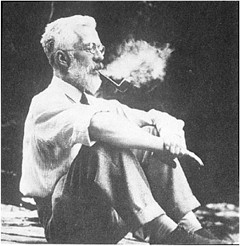 |
This post is based on the last part of chapter titled “In Praise of Randomisation. The importance of causality in medicine and its subversion by philosophers of science“. A talk was given at the meeting at the British Academy in December 2007, and the book will be launched on November 28th 2011 (good job it wasn’t essential for my CV with delays like that). The book is published by OUP for the British Academy, under the title Evidence, Inference and Enquiry (edited by Philip Dawid, William Twining, and Mimi Vasilaki, 504 pages, £85.00). The bulk of my contribution has already appeared here, in May 2009, under the heading Diet and health. What can you believe: or does bacon kill you?. It is one of the posts that has given me the most satisfaction, if only because Ben Goldacre seemed to like it, and he has done more than anyone to explain the critical importance of randomisation for assessing treatments and for assessing social interventions.
Having long since decided that it was Fisher, rather than philosophers, who had the answers to my questions, why bother to write about philosophers at all? It was precipitated by joining the London Evidence Group. Through that group I became aware that there is a group of philosophers of science who could, if anyone took any notice of them, do real harm to research. It seems surprising that the value of randomisation should still be disputed at this stage, and of course it is not disputed by anybody in the business. It was thoroughly established after the start of small sample statistics at the beginning of the 20th century. Fisher’s work on randomisation and the likelihood principle put inference on a firm footing by the mid-1930s. His popular book, The Design of Experiments made the importance of randomisation clear to a wide audience, partly via his famous example of the lady tasting tea. The development of randomisation tests made it transparently clear (perhaps I should do a blog post on their beauty). By the 1950s. the message got through to medicine, in large part through Austin Bradford Hill.
Despite this, there is a body of philosophers who dispute it. And of course it is disputed by almost all practitioners of alternative medicine (because their treatments usually fail the tests). Here are some examples.
“Why there’s no cause to randomise” is the rather surprising title of a report by Worrall (2004; see also Worral, 2010), from the London School of Economics. The conclusion of this paper is
“don’t believe the bad press that ‘observational studies’ or ‘historically controlled trials’ get – so long as they are properly done (that is, serious thought has gone in to the possibility of alternative explanations of the outcome), then there is no reason to think of them as any less compelling than an RCT.”
In my view this conclusion is seriously, and dangerously, wrong –it ignores the enormous difficulty of getting evidence for causality in real life, and it ignores the fact that historically controlled trials have very often given misleading results in the past, as illustrated by the diet problem.. Worrall’s fellow philosopher, Nancy Cartwright (Are RCTs the Gold Standard?, 2007), has made arguments that in some ways resemble those of Worrall.
Many words are spent on defining causality but, at least in the clinical setting the meaning is perfectly simple. If the association between eating bacon and colorectal cancer is causal then if you stop eating bacon you’ll reduce the risk of cancer. If the relationship is not causal then if you stop eating bacon it won’t help at all. No amount of Worrall’s “serious thought” will substitute for the real evidence for causality that can come only from an RCT: Worrall seems to claim that sufficient brain power can fill in missing bits of information. It can’t. I’m reminded inexorably of the definition of “Clinical experience. Making the same mistakes with increasing confidence over an impressive number of years.” In Michael O’Donnell’s A Sceptic’s Medical Dictionary.
At the other philosophical extreme, there are still a few remnants of post-modernist rhetoric to be found in obscure corners of the literature. Two extreme examples are the papers by Holmes et al. and by Christine Barry. Apart from the fact that they weren’t spoofs, both of these papers bear a close resemblance to Alan Sokal’s famous spoof paper, Transgressing the boundaries: towards a transformative hermeneutics of quantum gravity (Sokal, 1996). The acceptance of this spoof by a journal, Social Text, and the subsequent book, Intellectual Impostures, by Sokal & Bricmont (Sokal & Bricmont, 1998), exposed the astonishing intellectual fraud if postmodernism (for those for whom it was not already obvious). A couple of quotations will serve to give a taste of the amazing material that can appear in peer-reviewed journals. Barry (2006) wrote
“I wish to problematise the call from within biomedicine for more evidence of alternative medicine’s effectiveness via the medium of the randomised clinical trial (RCT).”
“Ethnographic research in alternative medicine is coming to be used politically as a challenge to the hegemony of a scientific biomedical construction of evidence.”
“The science of biomedicine was perceived as old fashioned and rejected in favour of the quantum and chaos theories of modern physics.”
“In this paper, I have deconstructed the powerful notion of evidence within biomedicine, . . .”
The aim of this paper, in my view, is not obtain some subtle insight into the process of inference but to try to give some credibility to snake-oil salesmen who peddle quack cures. The latter at least make their unjustified claims in plain English.
The similar paper by Holmes, Murray, Perron & Rail (Holmes et al., 2006) is even more bizarre.
“Objective The philosophical work of Deleuze and Guattari proves to be useful in showing how health sciences are colonised (territorialised) by an all-encompassing scientific research paradigm “that of post-positivism ” but also and foremost in showing the process by which a dominant ideology comes to exclude alternative forms of knowledge, therefore acting as a fascist structure. “,
It uses the word fascism, or some derivative thereof, 26 times. And Holmes, Perron & Rail (Murray et al., 2007)) end a similar tirade with
“We shall continue to transgress the diktats of State Science.”
It may be asked why it is even worth spending time on these remnants of the utterly discredited postmodernist movement. One reason is that rather less extreme examples of similar thinking still exist in some philosophical circles.
Take, for example, the views expressed papers such as Miles, Polychronis and Grey (2006), Miles & Loughlin (2006), Miles, Loughlin & Polychronis (Miles et al., 2007) and Loughlin (2007).. These papers form part of the authors’ campaign against evidence-based medicine, which they seem to regard as some sort of ideological crusade, or government conspiracy. Bizarrely they seem to think that evidence-based medicine has something in common with the managerial culture that has been the bane of not only medicine but of almost every occupation (and which is noted particularly for its disregard for evidence). Although couched in the sort of pretentious language favoured by postmodernists, in fact it ends up defending the most simple-minded forms of quackery. Unlike Barry (2006), they don’t mention alternative medicine explicitly, but the agenda is clear from their attacks on Ben Goldacre. For example, Miles, Loughlin & Polychronis (Miles et al., 2007) say this.
“Loughlin identifies Goldacre [2006] as a particularly luminous example of a commentator who is able not only to combine audacity with outrage, but who in a very real way succeeds in manufacturing a sense of having been personally offended by the article in question. Such moralistic posturing acts as a defence mechanism to protect cherished assumptions from rational scrutiny and indeed to enable adherents to appropriate the ‘moral high ground’, as well as the language of ‘reason’ and ‘science’ as the exclusive property of their own favoured approaches. Loughlin brings out the Orwellian nature of this manoeuvre and identifies a significant implication.”
If Goldacre and others really are engaged in posturing then their primary offence, at least according to the Sartrean perspective adopted by Murray et al. is not primarily intellectual, but rather it is moral. Far from there being a moral requirement to ‘bend a knee’ at the EBM altar, to do so is to violate one’s primary duty as an autonomous being.”
This ferocious attack seems to have been triggered because Goldacre has explained in simple words what constitutes evidence and what doesn’t. He has explained in a simple way how to do a proper randomised controlled trial of homeopathy. And he he dismantled a fraudulent Qlink pendant, purported to shield you from electromagnetic radiation but which turned out to have no functional components (Goldacre, 2007). This is described as being “Orwellian”, a description that seems to me to be downright bizarre.
In fact, when faced with real-life examples of what happens when you ignore evidence, those who write theoretical papers that are critical about evidence-based medicine may behave perfectly sensibly. Although Andrew Miles edits a journal, (Journal of Evaluation in Clinical Practice), that has been critical of EBM for years. Yet when faced with a course in alternative medicine run by people who can only be described as quacks, he rapidly shut down the course (A full account has appeared on this blog).
It is hard to decide whether the language used in these papers is Marxist or neoconservative libertarian. Whatever it is, it clearly isn’t science. It may seem odd that postmodernists (who believe nothing) end up as allies of quacks (who’ll believe anything). The relationship has been explained with customary clarity by Alan Sokal, in his essay Pseudoscience and Postmodernism: Antagonists or Fellow-Travelers? (Sokal, 2006).
Conclusions
Of course RCTs are not the only way to get knowledge. Often they have not been done, and sometimes it is hard to imagine how they could be done (though not nearly as often as some people would like to say).
It is true that RCTs tell you only about an average effect in a large population. But the same is true of observational epidemiology. That limitation is nothing to do with randomisation, it is a result of the crude and inadequate way in which diseases are classified (as discussed above). It is also true that randomisation doesn’t guarantee lack of bias in an individual case, but only in the long run. But it is the best that can be done. The fact remains that randomization is the only way to be sure of causality, and making mistakes about causality can harm patients, as it did in the case of HRT.
Raymond Tallis (1999), in his review of Sokal & Bricmont, summed it up nicely
“Academics intending to continue as postmodern theorists in the interdisciplinary humanities after S & B should first read Intellectual Impostures and ask themselves whether adding to the quantity of confusion and untruth in the world is a good use of the gift of life or an ethical way to earn a living. After S & B, they may feel less comfortable with the glamorous life that can be forged in the wake of the founding charlatans of postmodern Theory. Alternatively, they might follow my friend Roger into estate agency — though they should check out in advance that they are up to the moral rigours of such a profession.”
The conclusions that I have drawn were obvious to people in the business a half a century ago. (Doll & Peto, 1980) said
“If we are to recognize those important yet moderate real advances in therapy which can save thousands of lives, then we need more large randomised trials than at present, not fewer. Until we have them treatment of future patients will continue to be determined by unreliable evidence.”
The towering figures are R.A. Fisher, and his followers who developed the ideas of randomisation and maximum likelihood estimation. In the medical area, Bradford Hill, Archie Cochrane, Iain Chalmers had the important ideas worked out a long time ago.
In contrast, philosophers like Worral, Cartwright, Holmes, Barry, Loughlin and Polychronis seem to me to make no contribution to the accumulation of useful knowledge, and in some cases to hinder it. It’s true that the harm they do is limited, but that is because they talk largely to each other. Very few working scientists are even aware of their existence. Perhaps that is just as well.
References
Cartwright N (2007). Are RCTs the Gold Standard? Biosocieties (2007), 2: 11-20
Colquhoun, D (2010) University of Buckingham does the right thing. The Faculty of Integrated Medicine has been fired. https://www.dcscience.net/?p=2881
Miles A & Loughlin M (2006). Continuing the evidence-based health care debate in 2006. The progress and price of EBM. J Eval Clin Pract 12, 385-398.
Miles A, Loughlin M, & Polychronis A (2007). Medicine and evidence: knowledge and action in clinical practice. J Eval Clin Pract 13, 481-503.
Miles A, Polychronis A, & Grey JE (2006). The evidence-based health care debate – 2006. Where are we now? J Eval Clin Pract 12, 239-247.
Murray SJ, Holmes D, Perron A, & Rail G (2007).
Deconstructing the evidence-based discourse in health sciences: truth, power and fascis. Int J Evid Based Healthc 2006; : 4, 180–186.
Sokal AD (1996). Transgressing the Boundaries: Towards a Transformative Hermeneutics of Quantum Gravity. Social Text 46/47, Science Wars, 217-252.
Sokal AD (2006). Pseudoscience and Postmodernism: Antagonists or Fellow-Travelers? In Archaeological Fantasies, ed. Fagan GG, Routledge,an imprint of Taylor & Francis Books Ltd.
Sokal AD & Bricmont J (1998). Intellectual Impostures, New edition, 2003, Economist Books ed. Profile Books.
Tallis R. (1999) Sokal and Bricmont: Is this the beginning of the end of the dark ages in the humanities?
Worrall J. (2004) Why There’s No Cause to Randomize. Causality: Metaphysics and Methods.Technical Report 24/04 . 2004.
Worrall J (2010). Evidence: philosophy of science meets medicine. J Eval Clin Pract 16, 356-362.
Follow-up
Iain Chalmers has drawn my attention to a some really interesting papers in the James Lind Library
An account of early trials is given by Chalmers I, Dukan E, Podolsky S, Davey Smith G (2011). The adoption of unbiased treatment allocation schedules in clinical trials during the 19th and early 20th centuries. Fisher was not the first person to propose randomised trials, but he is the person who put it on a sound mathematical basis.
Another fascinating paper is Chalmers I (2010). Why the 1948 MRC trial of streptomycin used treatment allocation based on random numbers.
The distinguished statistician, David Cox contributed, Cox DR (2009). Randomization for concealment.
Incidentally, if anyone still thinks there are ethical objections to random allocation, they should read the account of retrolental fibroplasia outbreak in the 1950s, Silverman WA (2003). Personal reflections on lessons learned from randomized trials involving newborn infants, 1951 to 1967.
Chalmers also pointed out that Antony Eagle of Exeter College Oxford had written about Goldacre’s epistemology. He describes himself as a “formal epistemologist”. I fear that his criticisms seem to me to be carping and trivial. Once again, a philosopher has failed to make a contribution to the progress of knowledge.
The University of Wales is to stop validating all external degrees at home and abroad. and it has a new vice chancellor, Professor Medwin Hughes. This has happened eventually, after years of pressure, first from bloggers, and then from BBC Wales. That is a tacit admission that their validation procedures were useless, and bordering on the corrupt.
But the news doesn’t appear on the University of Wales front page. It is hidden away in a news item. With the incredible spin it is billed as “University of Wales launches bold new academic strategy“. No admission of the bad mistakes appears anywhere. Still worse, the vice-chancellor who was responsible for years of malpractice, Marc Clement, has not vanished, but has been promoted to be president of the University of Wales. It was Professor Clement who claimed, in November 2010, to be taken by “complete and total surprise“, when Welsh education minister accused him of bring the University of Wales into disrepute. This, sadly, cannot be true. I know that Clement was well aware of my 2008 blog, and of the opinion of Polly Toynbee. He’d corresponded with both of us in 2008.
Until recently the University of Wales validated an astonishing 11,675 degree courses, including fundamantalist bible colleges in Russia, Chinese medicine in Barcelona and courses in quackery at the Scottish School of Herbal Medicine, the Northern College of Acupuncture and the Mctimoney College of Chiropractic.
In October 2008 I posted Another worthless validation: the University of Wales and nutritional therapy. With the help of the Freedom of Information Act, it was possible to reveal the mind-boggling incompetence of the validation process used by the University of Wales. The vice chancellors organisation, UUK, did nothing whatsoever, as usual.
The mainstream media eventually caught up with bloggers. In 2010, BBC1 TV (Wales) produced an excellent TV programme that exposed the enormous degree validation scam run by the University of Wales. The programme can be seen on YouTube (Part 1, and Part 2). The programme also exposed, incidentally, the uselessness of the Quality Assurance Agency (QAA) which did nothing until the scam was exposed by TV and blogs.
One of the potty courses "validated" by the University of Wales was a "BSc" in Nutrional Therapy, run by Jacqueline Young at the Northern College of Acupuncture. The problem of Jacqueline Young’s fantasy approach to facts was pointed out at least as far back as 2004, by Ray Girvan., who wrote about it again in May 2005. The problems were brought to wider attention when Ben Goldacre wrote two articles in his Badscience column, Imploding Researchers (September 2005), and the following week, Tangled Webs.
“we were pondering the ethics and wisdom of Jacqueline Young dishing out preposterous, made-up, pseudoscientific nonsense as if it was authoritative BBC fact, with phrases such as: “Implosion researchers have found that if water is put through a spiral its electrical field changes and it then appears to have a potent, restorative effect on cells.” “
I wrote to Clement in 2008 to ask for his opinion, as a one-time electrical engineer, of this statement. Naturally I got no reply. It seems to be a characteristic of people who are very well paid that failure to do their job results in promotion, not firing.
Furthermore, the people who were primarily responsible for validating crackpot degrees are still there. It seems that Professor Nigel Palastanga (a physiotherapist) is still Pro Vice-Chancellor (Learning, Teaching and Enhancement). He was the person who totally failed to notice that Jacqueline Young had been a laughing stock for years before his committee solemnly approved her degree. And as late as 2010, Jacqueline Young was made a senior lecturer.
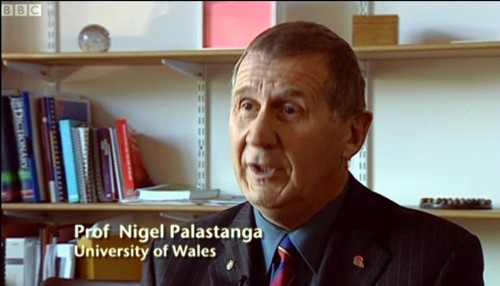
Among the courses "validated" by Palastanga were the McTimoney College of Chiropractic. They are presumably now in deep trouble. The College was, incidentally, owned by the BPP University, as recently promoted by David Willetts, so this is yet another sign of Willetts’ bad judgment. It’s private so it must be good, OK? The matter was recently given some well-deserved bad publicity in Private Eye.
It is a sorry story of pathetic quality control procedures and snail-like response from regulatory authorites. But something has been done and we should be grateful for that. Patients will be a bit safer now.
Follow-up
Quackometer also posted on October 3rd: McTimoney Chiropractic College in Deep Trouble.
October 4th More from BBC Wales, The new vice chancellor speaks. He admits nothing about malpractice.
October 5th “University of Wales degree and visa scam exposed by BBC”. More BBC Wales from Ciaran Jenkins.
October 5th (20.31) “Scrap University of Wales call by vice-chancellors” “Five universities want the University of Wales (UoW) title scrapped because they are appalled by claims about the validation of its qualifications.” So they noticed at last, 3 years after the first revelations, on this blog and by the BBC.
October 12. “University of Wales helps 650 stranded Tasmac students“. More than 650 overseas students may lose £7,850 fees paid to the Tasmac London School of Business, for a degree formerly validated by University of Wales. Tasmac has gone into liquidation, That’s what happens when validations are handed out like sweeties. The fact that the QAA approved the course means, as this case among others has shown, absolutely nothing. The University of Wales should be sufficiently ashamed of its past behaviour to refund the fees.
October 18. Bob Croydon, Welsh representative of the Prince of Wales’ Foundation for the Built Environment, is rather cross with Leighton Andrews, the Welsh minister of education who must get much of the credit for winding up the scams. He may also be in trouble with the quacktitioner royal after writing in an email " “Whilst the Minister could doubtless give the Prince of Wales a good run for his money in the Self Importancy Sweepstakes it would be. . ."
October 21 It now seems that the University of Wales will essentially vanish (and BBC report). . The chair of Council, Huw Thomas, has resigned. The closure is a pity for those who have real degrees awarded by the university, but it is a fate well-earned, The remaining mystery is the fate of Prof Clement and Prof Palastanga, who presided over the validation fiasco. It is they who are responsible for the students who have now been abandoned (read an account of Tasmac)
October 22 The Daily Telegraph reports University of Wales abolished after visa scandal. This misses the whole back story about validation scams.
Although the chair of Council has resigned, there is no information yet about Professors Clement and Palastanga, who presided over the fiasco. I was told on 24 October that “This information is yet to be determined”.
October 28. The university has produced two statements. one for students, and one for alumni. Both documents say
"Why is the merger happening?
Recent developments in Welsh Higher Education policy have been driven by a desire for there to be fewer universities in Wales. The Welsh Government is putting policies in place to have only six or seven universities (there are currently eleven). Our merger is in response to this challenge from the Government."
This, sadly, is a straighforward lie. The closure is a result of a long-running saga of phony and incompetent validations, sold for money. They have been aware of this at least since my first post in 2008, but nothing happened until the BBC gave it wide publicity. You don’t have to take my word that it’s a lie. Geraint Talfan Davies, a member of the Welsh government-commissioned McCormick review, said:
“I think that everybody has been aware of some of the risks involved in the University of Wales’ overseas activities.
“Validating at distance provides some real challenges, governance challenges, and that goes for everybody.
“The difficulty with the University of Wales was that it was on a pretty big scale and doing it on that scale makes it more difficult.”
It seems the University has lost touch with the idea of telling the truth.
There’s been no official announcement, but four more of Westminster’s courses in junk medicine have quietly closed.
For entry in 2011 they offer
| University of Westminster (W50) | qualification |
| Chinese Medicine: Acupuncture (B343) | 3FT Hon BSc |
| Chinese Medicine: Acupuncture with Foundation (B341) | 4FT/5FT Hon BSc/MSci |
| Complementary Medicine (B255) | 3FT Hon BSc |
| Complementary Medicine (B301) | 4FT Hon MHSci |
| Complementary Medicine: Naturopathy (B391) | 3FT Hon BSc |
| Herbal Medicine (B342) | 3FT Hon BSc |
| Herbal Medicine with Foundation Year (B340) | 4FT/5FT Hon BSc/MSci |
| Nutritional Therapy (B400) | 3FT Hon BSc |
But for entry in 2012
| University of Westminster (W50) | qualification |
| Chinese Medicine: Acupuncture (B343) | 3FT Hon BSc |
| Chinese Medicine: Acupuncture with Foundation (B341) | 4FT/5FT Hon BSc/MSci |
| Herbal Medicine (B342) | 3FT Hon BSc |
| Herbal Medicine with Foundation Year (B340) | 4FT/5FT Hon BSc/MSc |
At the end of 2006, Westminster was offering 14 different BSc degrees in seven flavours of junk medicine. In October 2008, it was eleven. This year it’s eight, and next year only four degrees in two subjects. Since "Integrated Health" was ‘merged’ with Biological Sciences in May 2010, two of the original courses have been dropped each year. This September there will be a final intake for Nutrition Therapy and Naturopathy. That leaves only two, Chinese Medicine (acupuncture and (Western) Herbal Medicine.
The official reason given for the closures is always that the number of applications has fallen. I’m told that the number of applications has halved over the last five or six years. If that’s right, it counts as a big success for the attempts of skeptics to show the public the nonsense that’s taught on these degrees. Perhaps it is a sign that we are emerging from the endarkenment.
Rumour has it that the remaining degrees will eventually close too. Let’s hope so. Meanwhile, here is another helping hand.
There is already quite a bit here about the dangers of Chinese medicine, e.g. here and, especially, here. A submission to the Department of Health gives more detail. There has been a lot on acupuncture here too. There is now little doubt that it’s no more than a theatrical, and not very effective, placebo. So this time I’ll concentrate on Western herbal medicine.
Western Herbal Medicine
Herbal medicine is just a branch of pharmacology and it could be taught as such. But it isn’t. It comes overlaid with much superstitious nonsense. Some of it can be seen in slides from Edinburgh Napier University (the difference being that Napier closed that course, and Westminster hasn’t)
Even if it were taught properly, it wouldn’t be appropriate for a BSc for several reasons.
First, there isn’t a single herbal that has full marketing authorisation from the MHRA. In other words, there isn’t a single herb for which there is good evidence that it works to a useful extent.
Second, the fact that the active principals in plants are virtually always given in an unknown dose makes them potentially dangerous. This isn’t 1950s pharmacology. It’s 1920s pharmacology, dating from a time before methods were worked out for standardising the potency of natural products (see Plants as Medicines).
Third, if you are going to treat illness with chemicals, why restrict yourself to chemicals that occur in plants?
It was the herbal medicine course that gave rise to the most virulent internal complaints at the University of Westminster. These complaints revealed the use of pendulum dowsing by some teachers on the course and the near-illegal, and certainly dangerous, teaching about herbs in cancer.
Here are a few slides from Principles of Herbal Medicine(3CT0 502). The vocabulary seems to be stuck in a time warp. When I first started in the late 1950s, words like tonic, carminative, demulcent and expectorant were common Over the last 40 years all these words have died out in pharmacology, for the simple reason that it became apparent that there were no such actions. But these imaginary categories are still alive and well in the herbal world.
There was a lecture on a categories of drugs so old-fashioned that I’ve never even heard the words: "nervines". and "adaptogens".
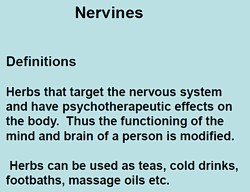 |
 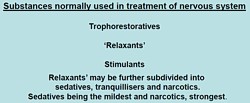 |
 |
The "tonics" listed here seem quite bizarre. In the 1950s, “tonics” containing nux vomica (a small dose of strychnine) and gentian (tastes nasty) were common, but they vanished years ago, because they don’t work. None of those named here even get a mention in NCCAM’s Herbs-at-a-glance. Oats? Come on! |
|
The only ‘relaxant’ here for which there is the slightest evidence is Valerian. I recall tincture of Valerian in a late 1950s pharmacy. It smells terrible, According to NCCAM
Not much, for something that’s been around for centuries. And for chamomile
None of this near-total lack of evidence is mentioned on the slides. |
 |
What about the ‘stimulants‘? Rosemary? No evidence at all. Tea and coffee aren’t medicine (and not very good stimulants for me either).
|
Ginseng, on the other hand, is big business. That doesn’t mean it works of course. NCCAM says of Asian ginseng (Panax Ginseng).
|
 |
Thymoleptics – antidepressants are defined as "herbs that engender a feeling of wellbeing. They uplift the spirit, improve the mood and counteract depression".
Oats, Lemon balm, Damiana, Vervain. Lavender and Rosemary are just old bits of folklore
|
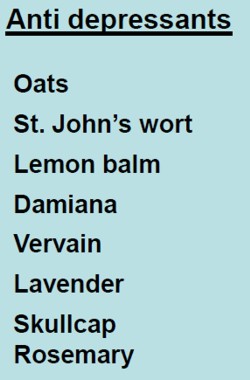 |
The only serious contender here is St John’s Wort. At one time this was the prize exhibit for herbalists. It has been shown to be as good as the conventional SSRIs for treatment of mild to moderate depression. Sadly it has turned out that the SSRIs are themselves barely better than placebos. NCCAM says
- There is scientific evidence that St. John’s wort may be useful for short-term treatment of mild to moderate depression. Although some studies have reported benefits for more severe depression, others have not; for example, a large study sponsored by NCCAM found that the herb was no more effective than placebo in treating major depression of moderate severity.
"Adaptogens" are another figment of the herbalists’ imaginations. They are defined in the lecture thus.
|

|
Well, it would be quite nice if such drugs existed. Sadly they don’t.
- The evidence for using astragalus for any health condition is limited. High-quality clinical trials (studies in people) are generally lacking.
Another lecture dealt with "stimulating herbs". No shortage of them, it seems.

Well at least one of these has quite well-understood effects in pharmacology, ephedrine, a sympathomimetic amine. It isn’t used much because it can be quite dangerous, even with the controlled dose that’s used in real medicine. In the uncontrolled dose in herbal medicines it is downright dangerous.
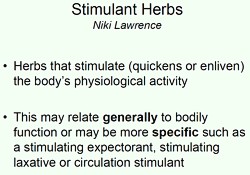
|

|

|
|
This is what NCCAM says about Ephedra
- An NCCAM-funded study that analyzed phone calls to poison control centers found a higher rate of side effects from ephedra, compared with other herbal products.
- Other studies and systematic reviews have found an increased risk of heart, psychiatric, and gastrointestinal problems, as well as high blood pressure and stroke, with ephedra use.
- According to the U.S. Food and Drug Administration (FDA), there is little evidence of ephedra’s effectiveness, except for short-term weight loss. However, the increased risk of heart problems and stroke outweighs any benefits.
It seems that what is taught in the BSc Herbal Medicine degree consists largely of folk-lore and old wives’ tales. Some of it could be quite dangerous for patients.
A problem for pharmacognosists
While talking about herbal medicine, it’s appropriate to mention a related problem, though it has nothing to do with the University of Westminster.
My guess is that not many people have even heard of pharmacognosy. If it were not for my humble origins as an apprentice pharmacist in Grange Road, Birkenhead (you can’t get much more humble than that) I might not know either.
Pharmacognosy is a branch of botany, the study of plant drugs. I recall inspecting powered digitalis leaves under a microscope. In Edinburgh, in the time of the great pharmacologist John Henry Gaddum, medical students might be presented in the oral exam with a jar of calabar beans and required to talk about their anticholinesterase effects of the physostigmine that they contain.
The need for pharmacognosy has now all but vanished, but it hangs on in the curriculum for pharmacy students. This has engendered a certain unease about the role of pharmacognists. They often try to justify their existence by rebranding themselves as "phytotherapists". There are even journals of phytotherapy. It sounds a lot more respectable that herbalism. At its best, it is more respectable, but the fact remains that there no herbs whatsoever that have well-documented medical uses.
The London School of Pharmacy is a case in point. Simon Gibbons (Professor of Phytochemistry, Department of Pharmaceutical and Biological Chemistry). The School of Pharmacy) has chosen, for reasons that baffle me, to throw in his lot with the reincarnated Prince of Wales Foundation known as the “College of Medicine“. That organisation exists largely (not entirely) to promote various forms of quackery under the euphemism “integrated medicine”. On their web site he says "Western science is now recognising the extremely high value of herbal medicinal products . . .", despite the fact that there isn’t a single herbal preparation with efficacy sufficient for it to get marketing authorisation in the UK. This is grasping at straws, not science.
The true nature of the "College of Medicine" is illustrated, yet again, by their "innovations network". Their idea of "innovation" includes the Bristol Homeopathic Hospital and the Royal London Hospital for Integrated medicine, both devoted to promoting the utterly discredited late-18th century practice of giving people pills that contain no medicine. Some "innovation".
It baffles me that Simon Gibbons is willing to appear on the same programme as Simon Mills and David Peters, and George Lewith. Mills’ ideas can be judged by watching a video of a talk he gave in which he ‘explains’ “hot and cold herbs”. It strikes me as pure gobbledygook. Make up your own mind. He too has rebranded himself as "phytotherapist" though in fact he’s an old-fashioned herbalist with no concern for good evidence. David Peters is the chap who, as Clinical Director of the University of Westminster’s ever-shrinking School of Quackery, tolerates dowsing as a way to select ‘remedies’.
The present chair of Pharmacognosy at the School of Pharmacy is Michael Heinrich. He, with Simon Gibbons, has written a book Fundamentals of pharmacognosy and phytotherapy. As well as much good chemistry, it contains this extraordinary statement
“TCM [traditional Chinese medicine] still contains very many remedies which were selected by their symbolic significance rather than their proven effects; however this does not mean that they are all ‘quack’remedies! There may even be some value in medicines such as tiger bone, bear gall, turtle shell, dried centipedes, bat dung and so on. The herbs, however, are well researched and are becoming increasingly popular as people become disillusioned with Western Medicine.”
It is irresponsible to give any solace at all to the wicked industries that kill tigers and torture bears to extract their bile. And it is simple untrue that “herbs are well-researched”. Try the test,
A simple test for herbalists. Next time you encounter a herbalist, ask them to name the herb for which there is the best evidence of benefit when given for any condition. Mostly they refuse to answer, as was the case with Michael McIntyre (but he is really an industry spokesman with few scientific pretensions). I asked Michael Heinrich, Professor of Pharmacognosy at the School of Pharmacy. Again I couldn’t get a straight answer. Usually, when pressed, the two things that come up are St John’s Wort and Echinacea. Let’s see what The National Center for Complementary and Alternative Medicine (NCCAM) has to say about them. NCCAM is the branch of the US National Institutes of Health which has spent around a billion dollars of US taxpayers’ money on research into alternative medicine, For all that effort they have failed to come up with a single useful treatment. Clearly they should be shut down. Nevertheless, as an organisation that is enthusiastic about alternative medicine, their view can only be overoptimistic.
For St John’s Wort . NCCAM says
- There is scientific evidence that St. John’s wort may be useful for short-term treatment of mild to moderate depression. Although some studies have reported benefits for more severe depression, others have not; for example, a large study sponsored by NCCAM found that the herb was no more effective than placebo in treating major depression of moderate severity.
For Echinacea NCCAM says
- Study results are mixed on whether echinacea can prevent or effectively treat upper respiratory tract infections such as the common cold. For example, two NCCAM-funded studies did not find a benefit from echinacea, either as Echinacea purpurea fresh-pressed juice for treating colds in children, or as an unrefined mixture of Echinacea angustifolia root and Echinacea purpurea root and herb in adults. However, other studies have shown that echinacea may be beneficial in treating upper respiratory infections.
If these are the best ones, heaven help the rest.
Follow-up
On 23rd May 2008 a letter was sent to the vice-chancellor of the University of Westminster, Professor Geoffrey Petts
|
 |
Despite reminders, we were never afforded the courtesy of a reply to this, or any other letter.
Professor Petts has, however, replied to a letters sent to him recently by the Nightingale Collaboration. He said
“Whilst I understand your concerns, colleagues of the School of Life Sciences where these courses are offered do not share them. They are not teaching pseudo-science, as you claim,…”.
Neither of thse claims is true.I know at least two members of the Life Sciences Faculty who are very worried. One has now left and one has retired. The rest are presumably too scared to speak out.
It is most certainly not true to say they "are not teaching pseudo-science". Both the vice-chancellor and the Dean of Life Sciences, Jane Lewis, have been made aware of what;s happening repeatedly over several years, I can think of no other way to put it but to say Professor Petts is lying. Tha is not a good thing for vice-chancellors to do.
Much of what is taught at Westminster has now been revealed. This seems like a good moment to summarise what we know. Searching this blog for "University of Westminster" yields 39 hits. Of these, 11 show what’s taught at Westminster, so I’ll summarise them here for easy reference.
March 26th, 2007
The day after “Science degrees without the Science“ appeared in Nature, the University of Westminster issued a statement (now vanished, but see debate in THE). In my view, their statement provides the strongest grounds so far to believe that the BSc is inappropriate.
Let’s take a look at it.
|
“The BSc (Hons) Health Sciences: Homeopathy is a fully validated degree that satisfies internal and external quality assurance standards.”
|
Since that time, the university has closed down the BSc in Homeopathy. I have now seen many such validation documents and they are mostly box ticking exercises, not worth the paper they are written on. The worst offender is the University or Wales.
Westminster University BSc: “amethysts emit high yin energy”
April 23rd, 2008
http://dcscience.net/vib-therapies-43s.jpg
|
This shows the first set of slides that I got from Westminster (leaked by an angry insider). It has slides on crystal healing and dowsing, things that are at the lunatic fringe even by the standards of alternative medicine. it also relates that an academic who invited me to give a talk at the University of Westminster on the evidence for alternative medal was leaned on heavily by “VC, Provosts and Deans” to prevent that talk taking place. |

|
Crystal balls. Professor Petts in Private Eye
February 19th, 2009
Professor Petts makes an appearance in Private Eye. It could held that this counts as bringing your university into disrepute.
February 24th, 2009
BSc courses in homeopathy are closing. Is it a victory for campaigners, or just the end of the Blair/Bush era?
|
Professor Petts of Westminster seems to think that the problem can be solved by putting more science into the courses The rest of the world realises that as soon as you apply science to homeopathy or naturopathy, the whole subject vanishes in a puff of smoke, I fear that Professor Petts will have to do better,
|
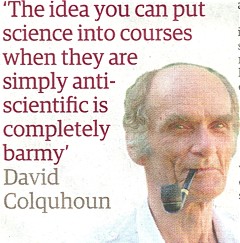 |
The Guardian carries a nice article by Anthea Lipsett, The Opposite of Science (or download pdf of print version).
The last BSc (Hons) Homeopathy closes! But look at what they still teach at Westminster University.
March 30th, 2009
In March 2007 I wrote a piece in Nature on Science degrees without the science. At that time there were five “BSc” degrees in homeopathy. A couple of weeks ago I checked the UCAS site for start in 2009, and found there was only one full “BSc (hons)” left and that was at Westminster University.
Today I checked again and NOW THERE ARE NONE.
A phone call to the University of Westminster tonight confirmed that they have suspended entry to their BSc (Hons) homeopathy degree.
Then I revealed another set of slides, showing a misunderstanding (by the teacher) of statistics, but most chillingly,some very dangerous ideas conveyed to students by Westminster’s naturopaths, and in the teaching of Traditional Chinese Medicine, and the great “detox” scam.

“if you get tuberculosis, it isn’t caused by Mycobacterium tuberculosis? And the symptoms are “constructive”? So you don’t need to do anything. It’s all for the best really.
This isn’t just nonsense. It’s dangerous nonsense.”
“Remember when shopping to favour fruits and vegetables which are in season and locally grown (and ideally organic) as they are more vibrationally compatible with the body.”
Locally grown vegetables are “more vibrationally compatible with the body”? Pure mystical gobbledygook. Words fail me.
More make-believe from the University of Westminster. This time it’s Naturopathy
June 25th, 2009
|
Some truly mind-boggling stuff that’s taught to students at Westminster, It includes "Emotrance". A primer on Emotrance says |
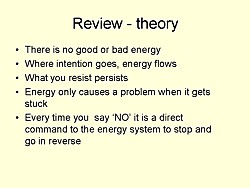 |
"And then I thought of the lady in the supermarket whose husband had died, and I spend the following time sending her my best wishes, and my best space time quantum healing efforts for her void."
Then there are slides on pendulum diagnosis and “kinesiology”, a well-known fraudulent method of diagnosis. It is all perfectly mad.
Why degrees in Chinese medicine are a danger to patients
August 10th, 2009
More lunatic fantasies from Westminster, this time about Chinese medicine.
“Teaching students that the brain is made of marrow is not just absurd, but desperately dangerous for anyone unlucky (or stupid) enough to go to such a person when they are ill.”
|
There is a lot of stuff about cancer that is potentially homicidal.
|
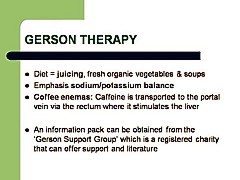 |
This is outrageous and very possibly illegal under the Cancer Act (1939). It certainly poses a huge danger to patients. It is a direct incentive to make illegal, and untrue claims by using weasel words in an attempt to stay just on the right side of the law. But that, of course, is standard practice in alternative medicine,
Emergent Chinese Omics at the University of Westminster/p>
August 27th, 2010
Systems biology is all the rage, No surprise then, to see the University of Westminster advertising a job for a systems biologist in the The Department of Molecular and Applied Biosciences. Well, no surprise there -until you read the small print.
Much has been written here about the University of Westminster, which remains the biggest provider of junk science degrees in the UK, despite having closed two of them.
If there is one thing more offensive than the use of meaningless mystical language, it is the attempt to hijack the vocabulary of real science to promote nonsense. As soon as a quack uses the words "quantum", "energy", "vibration", or now, "systems biology", you can be sure that it’s pretentious nonsense.
Hot of the press. Within a few hours of posting this, I was told that Volker Scheid, the man behind the pretentious Chinese medidine omics nonsense has been promoted to a full chair, And the Dean, Jane Lewis has congratulated him for speaking at a Chines Medicine symposium. Even quite sensible people like Lewis are being corrupted. The buck stops with Petts.
May 3rd, 2011
|
Yet more ghastly slides that are inflicted on Westminster students. How’s this for sheer barminess, taught as part of a Bachelor of Science degree? |
|
And
" Just in case you happen to have run out of Alaskan Calling All Angels Essence, you can buy it from Baldwin’s for £19.95. It’s “designed to invoke the nurturing, uplifting and joyful qualities of the angelic kingdom.”, and what’s more “can also use them any time to cleanse, energize, and protect your auric field.” Well that’s what it says.in the ad.
June 20th, 2011
This post gives details of two complaints, one from a student and one from a lecturer. The vice-chancellor certainly knows about them. So why, I wonder, did he say "“Whilst I understand your concerns, colleagues of the School of Life Sciences where these courses are offered do not share them.". He must know that this simply isn’t true. It is over a year now ( 10 July 2009 ) that a lecturer wrote to the vice-chancellor and Dean
|
“I expect that were the Department of Health to be aware of the unscientific teaching and promotion of practices like dowsing, (and crystals, iridology, astrology, and tasting to determine pharmacological qualities of plant extracts) on the Wmin HM [Westminster Herbal Medicine] Course, progress towards the Statutory Regulation of Herbal Medicine could be threatened.”
|
There’s only one thing wrong with this. The lecturer underestimated the stupidiity of the Department of Health which went ahead with statutory regulation despite being made aware of what was going on.
The latest example to come to light is cited by Andy Lewis on his Quackometer blog
“There are some even odder characters too, such as Roy Riggs B.Sc who describes himself as a “Holistic Geobiologist” and is “an “professional Earth Energy dowser”. He guest lectures at the London Westminster University’s School of Integrative Medicine and The Baltic Dowser’s Association of Lithuania.”
I do wonder who Professor Petts thinks he’s fooling. His denial of the obvious fact that his university is teaching pseudo-science serves only to discredit further the University of Westminster and his own integrity.
Follow-up
13 August 2011 I’m intrigued to notice that two days after posting this summary, googling “Geoffrey Petts” brings up this post as #3 on the first page. Actions have consequences.

